Let's learn about Microservices via these 277 free stories. They are ordered by most time reading created on HackerNoon. Visit the /Learn Repo to find the most read stories about any technology.
Loosely coupled and independently deployable.
1. DONT Use REST for Microservices, OK?

2. Setup a Node.js Application Using PM2
 What is PM2
What is PM2
3. MICROSERVICES - PART 1
 Hello Everyone. This will be the first part of my multi-part series which will explain the concept of microservices and how to orchestrate calls between them keeping in mind things like performance, latency and scalability.
Hello Everyone. This will be the first part of my multi-part series which will explain the concept of microservices and how to orchestrate calls between them keeping in mind things like performance, latency and scalability.
4. How to Build Microservices in Nest.JS
 An example that demonstrates using NestJS as a base framework for building lightweight, well-structured and amazing microservices.
An example that demonstrates using NestJS as a base framework for building lightweight, well-structured and amazing microservices.
5. Scale Your Microservices with an Easy Message Queue on Redis
 If you’re a microservices developer considering communication protocols, choosing an event-driven architecture might just help you rest a little easier at night. With the right design, event-driven architecture can help you to create apps that are decoupled and asynchronous, giving you the major benefits of your app being both performant and easily scalable.
If you’re a microservices developer considering communication protocols, choosing an event-driven architecture might just help you rest a little easier at night. With the right design, event-driven architecture can help you to create apps that are decoupled and asynchronous, giving you the major benefits of your app being both performant and easily scalable.
6. The Microservices Maestro
 Something I really like about living in the city is the fact that it is made for the masses. Despite its many defects (the rain not being one), Seattle is architected to enable hundreds of thousands of people to go through their busy days. It has a transportation system that interconnects different areas, it mandates different land usage policies for parks, residences, commerces and schools, and it provides restricted parking zones. It is designed for walking (assuming you like hills), it provides easy access to hospitals and it is guarded by police and fire departments.
Something I really like about living in the city is the fact that it is made for the masses. Despite its many defects (the rain not being one), Seattle is architected to enable hundreds of thousands of people to go through their busy days. It has a transportation system that interconnects different areas, it mandates different land usage policies for parks, residences, commerces and schools, and it provides restricted parking zones. It is designed for walking (assuming you like hills), it provides easy access to hospitals and it is guarded by police and fire departments.
7. Learning these 5 microservice patterns will make you a better engineer
 For a lot of engineers, getting into microservices can be tough, because it’s hard to decide where lines should be drawn. For me, 80% of services fall into one of five categories, and dividing the responsibilities this way allows you to think of how to engineer features by piping services together kinda like you would do in Unix shell scripting.
For a lot of engineers, getting into microservices can be tough, because it’s hard to decide where lines should be drawn. For me, 80% of services fall into one of five categories, and dividing the responsibilities this way allows you to think of how to engineer features by piping services together kinda like you would do in Unix shell scripting.
8. A different approach to User Sessions in Microservices
 the most important pieces of data for your whole application is kept in-memory and shared throughout all modules of your application: the user session.
the most important pieces of data for your whole application is kept in-memory and shared throughout all modules of your application: the user session.
9. Best Practices for Event-Driven Microservice Architecture
 If you’re an enterprise architect, you’ve probably heard of and worked with a microservices architecture. And while you might have used REST as your service communications layer in the past, more and more projects are moving to an event-driven architecture. Let’s dive into the pros and cons of this popular architecture, some of the key design choices it entails, and common anti-patterns.
If you’re an enterprise architect, you’ve probably heard of and worked with a microservices architecture. And while you might have used REST as your service communications layer in the past, more and more projects are moving to an event-driven architecture. Let’s dive into the pros and cons of this popular architecture, some of the key design choices it entails, and common anti-patterns.
10. Using Kafka & Zookeeper Offsets
 Kafka version 0.9v and above provide the capability to store the topic offsets on the broker directly instead of relying on the Zookeeper.
Kafka version 0.9v and above provide the capability to store the topic offsets on the broker directly instead of relying on the Zookeeper.
11. Distroless Containers: Hype or True Value?
 The goal
The goal
12. The 10 Puzzle Pieces of an Effective Microservice Architecture
 Anyone can make a tiny service. It’s the first thing you do when you make your “Hello World” express server. If you’ve made a “Hello World” express server before, then congratulations! You’ve made a microservice 😜!
Anyone can make a tiny service. It’s the first thing you do when you make your “Hello World” express server. If you’ve made a “Hello World” express server before, then congratulations! You’ve made a microservice 😜!
13. Rethinking Programming: Automated Observability

14. [Deep Dive] Docker, Kubernetes, and Microservices for Small Teams
 Most of the web apps I build eventually end up needing a background worker. There will be some slow or heavy task that really should run independently, like an integration with a third-party server, a web scraper, PDF creation, something.
Most of the web apps I build eventually end up needing a background worker. There will be some slow or heavy task that really should run independently, like an integration with a third-party server, a web scraper, PDF creation, something.
15. How To Do Unit Testing For Microservices
 The microservices approach of building applications is most suitable when we develop complex applications with diverse functionalities. Since microservices, unlike monolithic architecture, keeps each function independent of the other, it is the most followed technique in modern times for large applications.
The microservices approach of building applications is most suitable when we develop complex applications with diverse functionalities. Since microservices, unlike monolithic architecture, keeps each function independent of the other, it is the most followed technique in modern times for large applications.
16. How to Design a Web Application: Software Architecture 101
 So you’ve embarked on the entrepreneurial journey to build your own web application. You’ve got the idea in place, but the significance of getting the architecture right is extremely important.
So you’ve embarked on the entrepreneurial journey to build your own web application. You’ve got the idea in place, but the significance of getting the architecture right is extremely important.
17. How to Call Multiple Microservices in Parallel
 We can call microservices in parallel, storing results in the form of feature objects in one more list and then combine the result of all features.
We can call microservices in parallel, storing results in the form of feature objects in one more list and then combine the result of all features.
18. How We Scaled To Microservices Architecture With A Data Flow-driven Approach
 Microservices architecture: It was proposed to develop a data flow-driven mechanism for microservices — oriented decomposition. Data work separately with the site
Microservices architecture: It was proposed to develop a data flow-driven mechanism for microservices — oriented decomposition. Data work separately with the site
19. We Moved 250 Microservices to Kubernetes With No Downtime
 How to move spring boot microservices cluster to kubernetes
How to move spring boot microservices cluster to kubernetes
20. Why Micro Frontends Are the Future of Frontend Development
 Microservices have helped the backend world to divide backends into smaller, more manageable, and more efficient pieces.
Microservices have helped the backend world to divide backends into smaller, more manageable, and more efficient pieces.
21. AWS ECS vs AWS Lambda Compared
 Comparing cloud services? Read our Lambda vs ECS guide. Consider programming language, pricing, and the benefits.
Comparing cloud services? Read our Lambda vs ECS guide. Consider programming language, pricing, and the benefits.
22. How Stream Processing Makes Your Event-Driven Architecture Better
 If you’re an architect or developer looking at event-driven architectures, stream processing might be just what you need to make your app faster, more scalable, and more decoupled.
If you’re an architect or developer looking at event-driven architectures, stream processing might be just what you need to make your app faster, more scalable, and more decoupled.
23. 9 Basic (and Crucial) Tips for Microservices Developers
 If you’re going to work on microservices projects, you need to learn these basic, yet crucial, tips.
If you’re going to work on microservices projects, you need to learn these basic, yet crucial, tips.
24. Access API Running on Localhost From The Internet without Tunneling
 Tunnels allow a dev to easily bypass NAT and firewall restrictions... but what is the tradeoff? Anything behind the firewall is now exposed to the internet
Tunnels allow a dev to easily bypass NAT and firewall restrictions... but what is the tradeoff? Anything behind the firewall is now exposed to the internet
25. Building User Service With GRPC, Node.JS, and MongoDB: The Complete Microservice Tutorial — [Part 2]
 Microservices are about decoupling your system. In a monolith, you build all the components of the software in one large codebase and deploy the software at once. But in the microservice world, we build each component of a large system decoupled from each other.
Microservices are about decoupling your system. In a monolith, you build all the components of the software in one large codebase and deploy the software at once. But in the microservice world, we build each component of a large system decoupled from each other.
26. Issues With Setting up Azure Functions with a Service Bus Trigger
 So recently we had a problem. We’ve started building a micro-service based e-commerce platform that communicates using azure service bus. Unfortunately, we found that setting up azure functions with a service bus trigger either ended up with a lot of code to maintain or a lot of deployment pipelines. It was getting to be a pain, so we looked for an alternative which we found with logic apps and a bootstrapper function which I’ll take you through how to implement.
So recently we had a problem. We’ve started building a micro-service based e-commerce platform that communicates using azure service bus. Unfortunately, we found that setting up azure functions with a service bus trigger either ended up with a lot of code to maintain or a lot of deployment pipelines. It was getting to be a pain, so we looked for an alternative which we found with logic apps and a bootstrapper function which I’ll take you through how to implement.
27. Microservices Architecture, The Decision Maker: Book Review
 This book assists Architects and Engineers involved in the development of software in assessing whether a Microservice Architecture meets business needs.
This book assists Architects and Engineers involved in the development of software in assessing whether a Microservice Architecture meets business needs.
28. Practical Microservices Development Patterns: CRUD Vs. CQRS
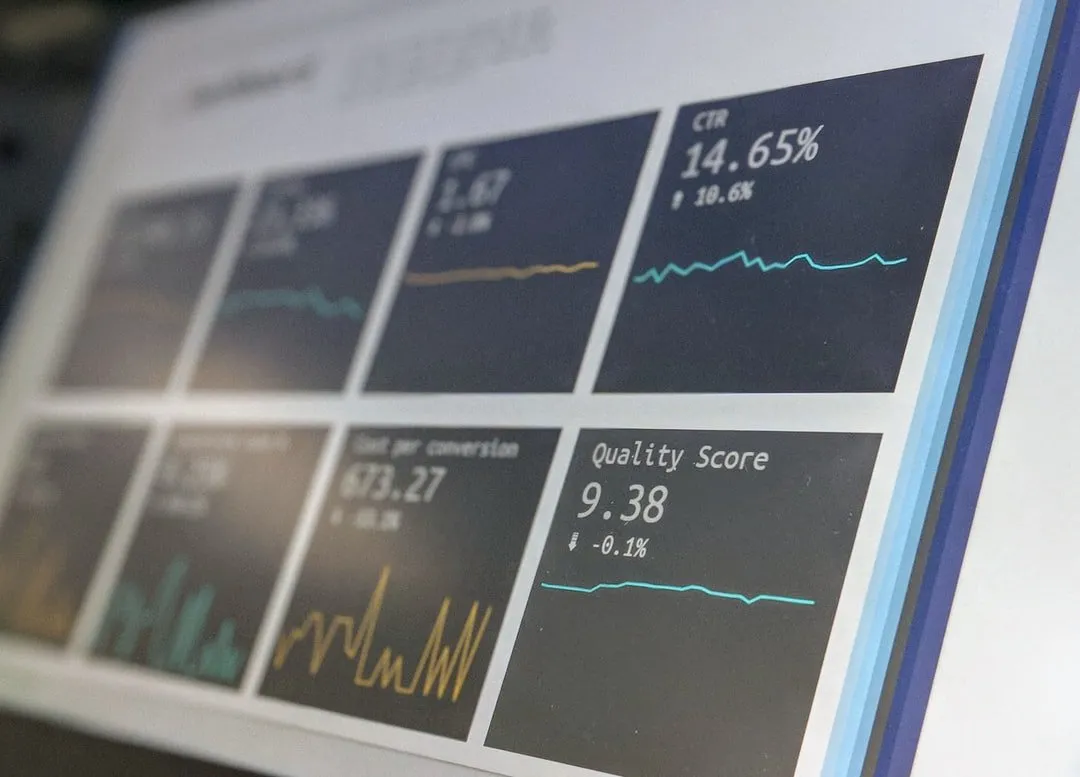 There are several patterns out there for handling data in microservices development. The most familiar one being the CRUD pattern.
There are several patterns out there for handling data in microservices development. The most familiar one being the CRUD pattern.
29. Authentication Middleware in Express Gateway using JWT
 I was trying to create my first actual microservice program and very soon I faced an issue: "How many times I should do the authentication?"
I was trying to create my first actual microservice program and very soon I faced an issue: "How many times I should do the authentication?"
30. Migrate Functions First : A Best Practice For Serverless Enterprise Adoption
 This article for is for those of us tasked with refactoring/rewriting an existing application. A significant application. Not only in size, but importance to the organization. The type of apps:
This article for is for those of us tasked with refactoring/rewriting an existing application. A significant application. Not only in size, but importance to the organization. The type of apps:
31. API Gateway vs Backend for Frontend (BFF): Use Cases, Similarities and Divergencies
 In this article, we are going to see what an API Gateway, BFFs, and how they are used for Client-Server communication in a Microservices architecture.
In this article, we are going to see what an API Gateway, BFFs, and how they are used for Client-Server communication in a Microservices architecture.
32. Test Your APIs in an Easy Way By Using Python Module PyHTTPTest
 I've struggled and spent a lot of hours writing manual Python scripts to be able to test a product involving many microservices. All of them following the REST conventions. Overwhelmed with too many scripts, each one test different endpoints, how they respond also what they respond, I've decided to create a Python package to easily do this, without needing to create a manual Python script, import libraries to send an HTTP Request, copy and paste code from other scripts to test fast the new endpoints, etc.
I've struggled and spent a lot of hours writing manual Python scripts to be able to test a product involving many microservices. All of them following the REST conventions. Overwhelmed with too many scripts, each one test different endpoints, how they respond also what they respond, I've decided to create a Python package to easily do this, without needing to create a manual Python script, import libraries to send an HTTP Request, copy and paste code from other scripts to test fast the new endpoints, etc.
33. Rethinking Programming: Network-Aware Type System

34. Microservices Communication with the use of Apache Kafka
 The scalability, efficiency, and competitiveness of the product are determined by the strategy used.
The scalability, efficiency, and competitiveness of the product are determined by the strategy used.
35. Practical Transaction Handling in Microservice Architecture
 It’s challenging to handle the complexities that come with a distributed system when moving away from a monolith to microservice architecture (MSA). Transaction handling is at the front and center of this issue. A typical database transaction done in a web application using local transactions is now a complicated distributed transaction problem. In this article, we will discuss what causes this, the possible solutions, and the best practices in developing safe transactional software systems using MSA.
It’s challenging to handle the complexities that come with a distributed system when moving away from a monolith to microservice architecture (MSA). Transaction handling is at the front and center of this issue. A typical database transaction done in a web application using local transactions is now a complicated distributed transaction problem. In this article, we will discuss what causes this, the possible solutions, and the best practices in developing safe transactional software systems using MSA.
36. Introducing Microservices Security in Action
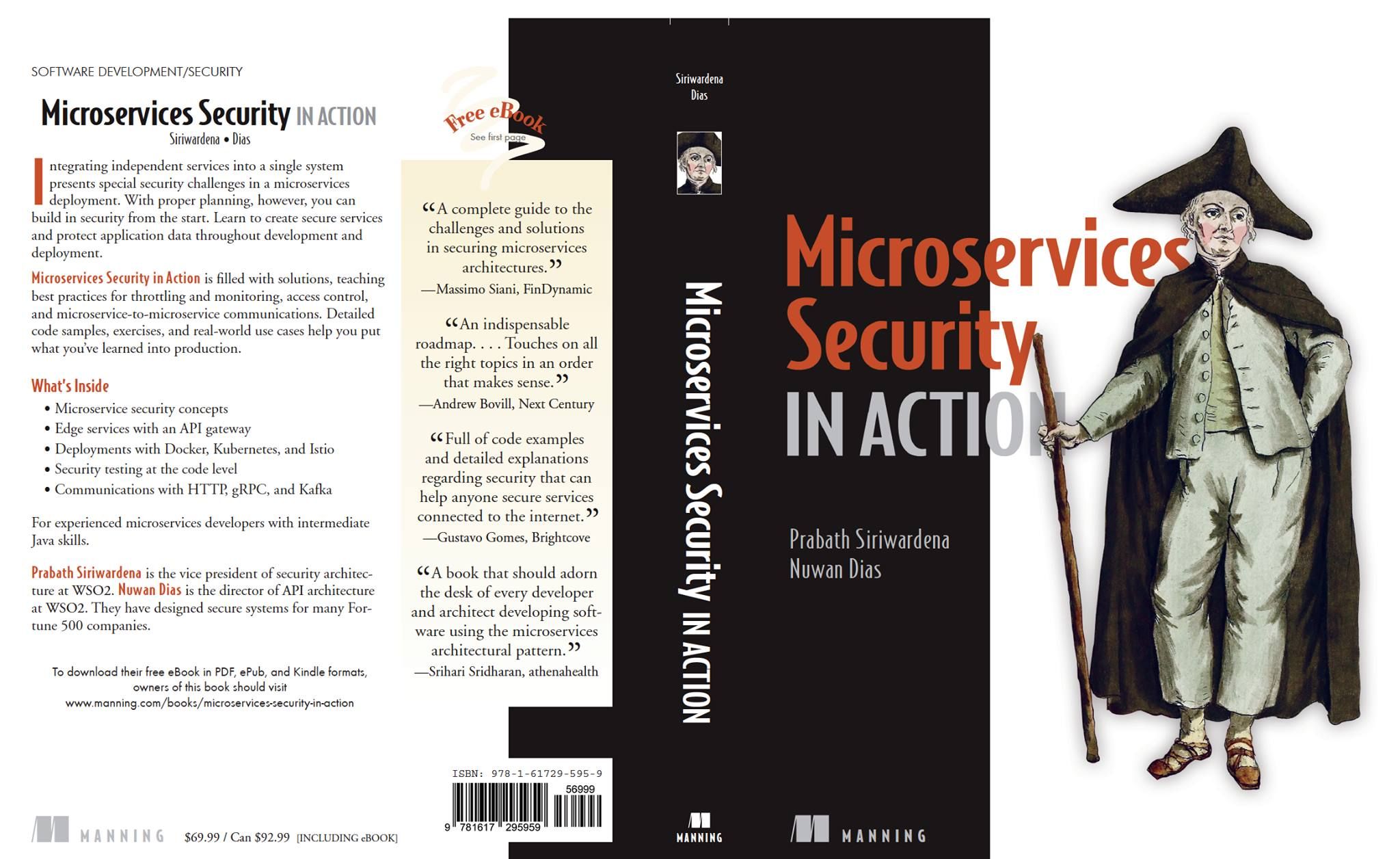 The book Microservices Security in Action, which I authored with Nuwan Dias is now available to buy online from Amazon and Manning. Nuwan and I spent last 27+ months writing/re-writing the book. It was a marathon effort, but yet a great experience, and we both are very glad to see how it came out at the end! This is the story, which lead us to write the book.
The book Microservices Security in Action, which I authored with Nuwan Dias is now available to buy online from Amazon and Manning. Nuwan and I spent last 27+ months writing/re-writing the book. It was a marathon effort, but yet a great experience, and we both are very glad to see how it came out at the end! This is the story, which lead us to write the book.
37. Microsoft's DAPR (Distributed Application Runtime): An Overview
 Discover the powerful capabilities of Dapr by implementing a sample application with microservices leveraging the actor model to foster its strengths.
Discover the powerful capabilities of Dapr by implementing a sample application with microservices leveraging the actor model to foster its strengths.
38. The Challenges of Modern Observability
 It’s tough, impossible, to get a holistic view of your entire application when it’s running on 200 pods deployed to 12 nodes distributed across the world.
It’s tough, impossible, to get a holistic view of your entire application when it’s running on 200 pods deployed to 12 nodes distributed across the world.
39. Five Book Recommendations For Serverless Developers
 Five books you must read if you are going serverless including books by Eric Evans, Richard Rodger, Chris Richardson, and more.
Five books you must read if you are going serverless including books by Eric Evans, Richard Rodger, Chris Richardson, and more.
40. Monolithic vs Microservice Architecture: All You Need To Know
 The problem that enormous scale venture applications a work in progress bring to the table of programming designers was excessively. There was no arrangement at all to this issue that is the reason an alternate building style was required. Henceforth the expression "microservices" appeared after the economical advancement in distributed computing space, it was first utilized by Dr Peter Rogers in a meeting on distributed computing in 2005.
The problem that enormous scale venture applications a work in progress bring to the table of programming designers was excessively. There was no arrangement at all to this issue that is the reason an alternate building style was required. Henceforth the expression "microservices" appeared after the economical advancement in distributed computing space, it was first utilized by Dr Peter Rogers in a meeting on distributed computing in 2005.
41. ROLE BASED ACCESS CONTROL (RBAC) DESIGN FOR MICROSERVICES
 This article extends the principles and design of API gateway discussed in the article here API Gateway.
This article extends the principles and design of API gateway discussed in the article here API Gateway.
42. Starting Web Development? Remember These 5 Things
 Originally I shared this story to Syndicode blog, and now I'm making a summary with small additions.
Originally I shared this story to Syndicode blog, and now I'm making a summary with small additions.
43. Promises, Microservices, and Intent

44. Why Microservices?
 I have a few tidbits about why to use microservices and why it makes sense to create few microservices as a side project and learn from the same. A lot has been said on why you should use microservices in the internet, that said, I look at it from a practical point of view and give you a very basic idea why we should use microservices and stop monoliths from becoming huge mountains of code in the future.
I have a few tidbits about why to use microservices and why it makes sense to create few microservices as a side project and learn from the same. A lot has been said on why you should use microservices in the internet, that said, I look at it from a practical point of view and give you a very basic idea why we should use microservices and stop monoliths from becoming huge mountains of code in the future.
45. What We Learned By Dockerizing Our Applications
 A universal truth we’ve experienced as both an IT software vendor and as an application delivery team is that application owners are constantly trying to deliver better software faster.
A universal truth we’ve experienced as both an IT software vendor and as an application delivery team is that application owners are constantly trying to deliver better software faster.
46. How Local Development Is Dying and Why it's For the Better
 Serverless infrastructure is changing the way we architect applications and it’s also changing the way we code and work as developers. The development is moving away from our laptop and into the cloud. It’s the start of cloud-native development.
Serverless infrastructure is changing the way we architect applications and it’s also changing the way we code and work as developers. The development is moving away from our laptop and into the cloud. It’s the start of cloud-native development.
47. How to Build a GraphQL Data Layer for REST Microservices
 GraphQL is a great technology for REST microservices. Learn how to create a data layer for microservices, without writing any code!
GraphQL is a great technology for REST microservices. Learn how to create a data layer for microservices, without writing any code!
48. Abstraction Layers and API's for Cloud Native Environments

49. Load Balancers - Whats, Hows, and Whens
 TL;DR
TL;DR
50. 300 Scholarships Up For Grabs at The School of Cloud Computing Courtesy Udacity and SUSE
 Apply today for Udacity’s SUSE Cloud Native Foundations Scholarship program and learn the skills you need to become a cloud native developer.
Apply today for Udacity’s SUSE Cloud Native Foundations Scholarship program and learn the skills you need to become a cloud native developer.
51. Modularizing Docker Images
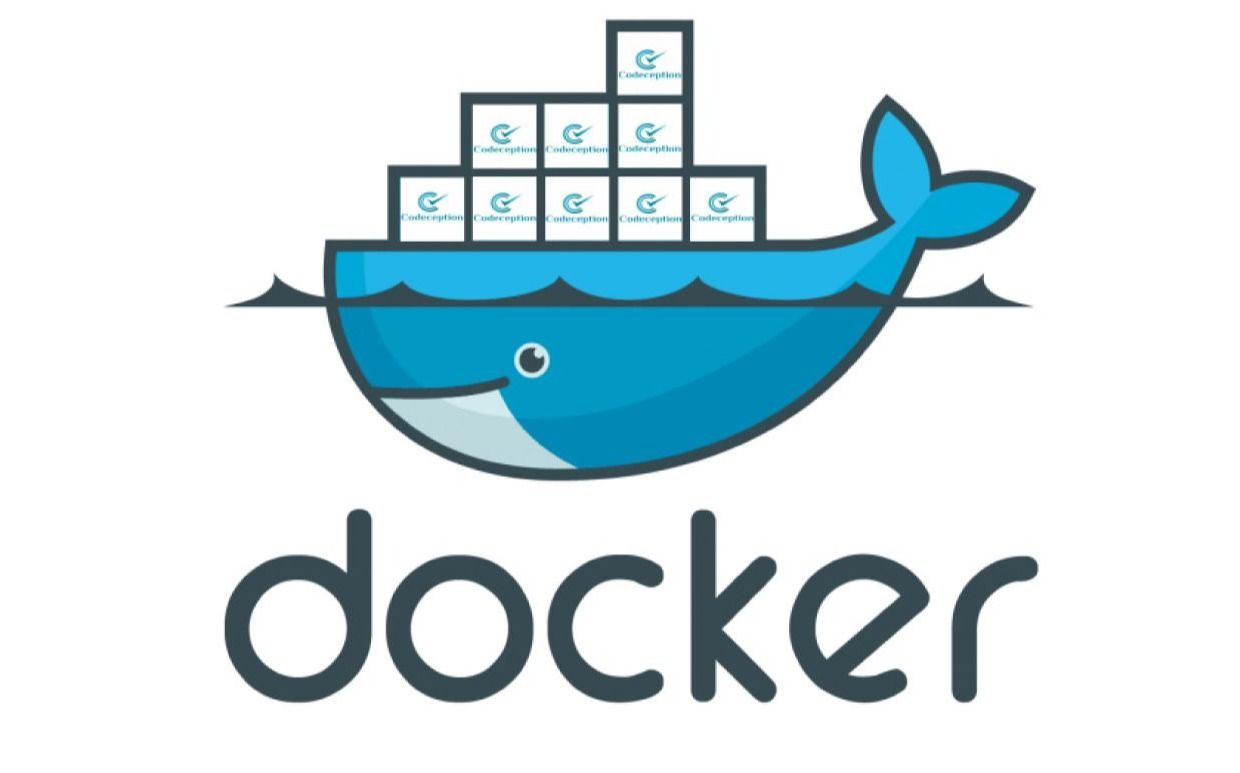 Docker is a containerization technology that allows an application to run in an isolated environment while being bundled with all the dependencies it needs to run. So it provides a standard way to run applications in a server agnostic manner.
Docker is a containerization technology that allows an application to run in an isolated environment while being bundled with all the dependencies it needs to run. So it provides a standard way to run applications in a server agnostic manner.
52. What is OSGi? - An Intro to The Open Service Gateway Initiative
 Have you ever wondered “What OSGi is?”. OSGi stands for Open Service Gateway Initiative, which is a Java framework for developing and deploying modular software
Have you ever wondered “What OSGi is?”. OSGi stands for Open Service Gateway Initiative, which is a Java framework for developing and deploying modular software
53. Event-Driven Architecture: Automatic DTO Generation From Event Documentation
 In this article, I would like to tell you how I solved the following task, namely the generation of DTOs using the JSON documentation that springwolf generates.
In this article, I would like to tell you how I solved the following task, namely the generation of DTOs using the JSON documentation that springwolf generates.
54. Open Source Blockchain Microservices To Help You Build Your Own
 The CEO of Koinos Group explains how Koinos is designed to support an experimental and iterative product development process like the Lean Startup
The CEO of Koinos Group explains how Koinos is designed to support an experimental and iterative product development process like the Lean Startup
55. "Unless you’ve been developing software in a cave"
 In this article, we’ll look at some microservices best practices and suggest a few proven ways to help with your microservices architecture.
In this article, we’ll look at some microservices best practices and suggest a few proven ways to help with your microservices architecture.
56. The Complete Microservice Tutorial: Introduction [Part 1]
 Project Link: https://github.com/Joker666/microservice-demo/
Project Link: https://github.com/Joker666/microservice-demo/
57. Microservice.add(observability) != Microservice.add(monitoring)
 You are reading this content, which means that you are not novice to the microservices field. So let me just scratch the surface of it before moving to Observable Microservices. Once upon a time Monolith Application was now transformed into Microservices based application.
You are reading this content, which means that you are not novice to the microservices field. So let me just scratch the surface of it before moving to Observable Microservices. Once upon a time Monolith Application was now transformed into Microservices based application.
58. How To Orchestrate Event-Driven Microservices
 Want to add better visibility and flexibility to your microservies architecture? Read on to find out how adding a Conductor can help!
Want to add better visibility and flexibility to your microservies architecture? Read on to find out how adding a Conductor can help!
59. Building Microservices For Quick Wins — An Insight — Part 1

60. How Netflix works: the (Hugely Simplified) Complex Stuff that Happens Every Time You Hit Play
 Not long ago, House of Cards came back for the fifth season, finally ending a long wait for binge watchers across the world who are interested in an American politician’s ruthless ascendance to presidency. For them, kicking off a marathon is as simple as reaching out for your device or remote, opening the Netflix app and hitting Play. Simple, fast and instantly gratifying.
Not long ago, House of Cards came back for the fifth season, finally ending a long wait for binge watchers across the world who are interested in an American politician’s ruthless ascendance to presidency. For them, kicking off a marathon is as simple as reaching out for your device or remote, opening the Netflix app and hitting Play. Simple, fast and instantly gratifying.
61. How I Built a Spring Boot Application that Handles Requests for a Telegram Bot
 I chose Spring Cloud for the architecture of my Kotlin pet project and it was right. What conclusions have I drawn?
I chose Spring Cloud for the architecture of my Kotlin pet project and it was right. What conclusions have I drawn?
62. 5 Best Technologies You Can Use to Deploy and Manage a Microservices Architecture
 Check out the latest platforms and tools to deploy and manage Microservices here! Take a look!
Check out the latest platforms and tools to deploy and manage Microservices here! Take a look!
63. 5 Tips for Creating Docker Images with Spring Boot
 Keep up with the latest and best practices to build spring boot docker images.
Keep up with the latest and best practices to build spring boot docker images.
64. Storage Options for Serverless on AWS
 Serverless computing enables you to run functions without provisioning resources. Most of the top cloud providers offer good serverless options, but this article offers a review of storage options for serverless on AWS. First, you will learn about the core principles of storage and data persistence in serverless computing, and then you'll discover what serverless options are available on AWS for databases, microservices, IoT, and storage synchronization.
Serverless computing enables you to run functions without provisioning resources. Most of the top cloud providers offer good serverless options, but this article offers a review of storage options for serverless on AWS. First, you will learn about the core principles of storage and data persistence in serverless computing, and then you'll discover what serverless options are available on AWS for databases, microservices, IoT, and storage synchronization.
65. 3 Architectural Design Patterns for Software Development
 Learn about software architectural patterns and their benefits and drawbacks.An architectural pattern is a general, reusable solution to a commonly problem
Learn about software architectural patterns and their benefits and drawbacks.An architectural pattern is a general, reusable solution to a commonly problem
66. Circuit Breakers in Microservices
 The circuit breaker is a design pattern, used extensively in distributed systems to prevent cascading failures. In this post, we’ll go through the problem of cascading failures and go over how the circuit breaker pattern is used.
The circuit breaker is a design pattern, used extensively in distributed systems to prevent cascading failures. In this post, we’ll go through the problem of cascading failures and go over how the circuit breaker pattern is used.
67. Hacking Your Way Through Microservice Architecture
 With an emerging pattern of organizations embracing the DevOps framework, adopting Microservice Architecture is steadily gaining the respect it deserves.
With an emerging pattern of organizations embracing the DevOps framework, adopting Microservice Architecture is steadily gaining the respect it deserves.
68. Cherrypy Introduction: Simple Python Library for Quick Application Development
 For day to day work in dev-ops or for testing team , we need to put stub in between some application to fill the gap for the application which are not present on local testing lab , for that we need to put some stub so that it can mimic like actual application .
For day to day work in dev-ops or for testing team , we need to put stub in between some application to fill the gap for the application which are not present on local testing lab , for that we need to put some stub so that it can mimic like actual application .
69. Microservice Observability Patterns [Part 1]
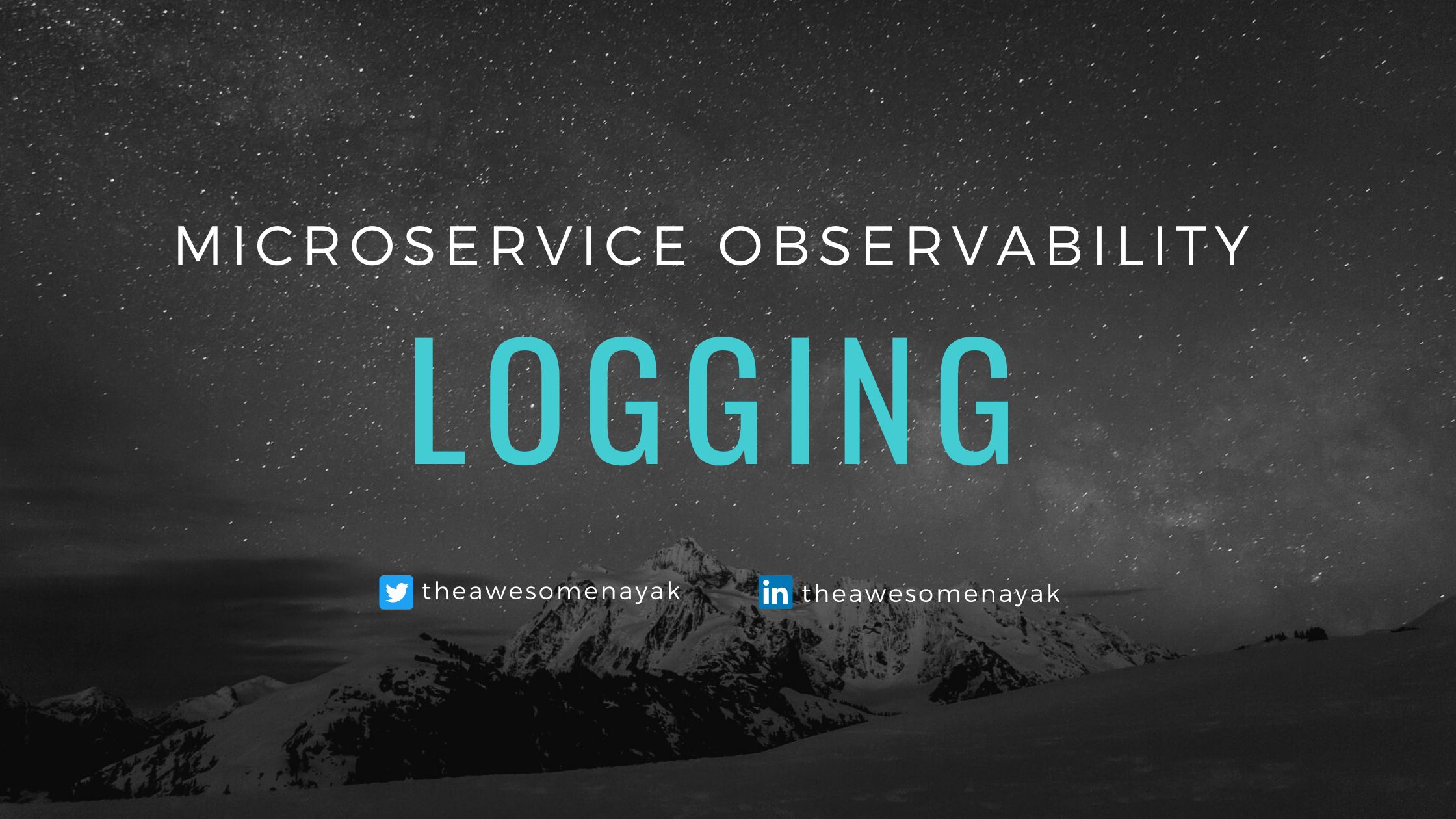 Logging is one of the most important parts of software systems. Whether you have just started working on a new piece of software, or your system is running in a large scale production environment, you’ll always find yourself seeking help from log files. Logs are the first thing people look for when something goes wrong, or something doesn’t work as expected.
Logging is one of the most important parts of software systems. Whether you have just started working on a new piece of software, or your system is running in a large scale production environment, you’ll always find yourself seeking help from log files. Logs are the first thing people look for when something goes wrong, or something doesn’t work as expected.
70. Purpose-Driven Microservice Design
 Creating purpose-driven microservices should always be a goal. Find out how Render Blueprints can offer a reproducible microservices strategy.
Creating purpose-driven microservices should always be a goal. Find out how Render Blueprints can offer a reproducible microservices strategy.
71. Musings On Software Architecture: Monoliths to Microservices
 I've been planning some of my personal projects lately and this subject kind of caught my mind. I've seen so much hype about microservices, that I need to put my thoughts into perspective... I know that microservices is a very valid architectural model and perhaps an inevitable stage of cloud software development once it scales…
I've been planning some of my personal projects lately and this subject kind of caught my mind. I've seen so much hype about microservices, that I need to put my thoughts into perspective... I know that microservices is a very valid architectural model and perhaps an inevitable stage of cloud software development once it scales…
72. 13 Questions and Answers for Google Cloud Reference Architectures
 Google Cloud is a cloud computing platform that can be used to build and deploy applications. It allows you to take advantage of the flexibility of development while scaling the infrastructure as needed.
Google Cloud is a cloud computing platform that can be used to build and deploy applications. It allows you to take advantage of the flexibility of development while scaling the infrastructure as needed.
73. Introduction to API Gateway
 What's a gateway? It is an entry point. Things go in. People, traffic, requests. If you've spent any time with microservices, you may have come across the term "API gateway".
What's a gateway? It is an entry point. Things go in. People, traffic, requests. If you've spent any time with microservices, you may have come across the term "API gateway".
74. Microservices Wars: Spring Boot Vs. Ballerina
 Microservices is an architectural style used for creating applications made of individual fine-grained services, which encourages functional decoupling, re-usability, and scalability. This is becoming increasingly popular compared to the monolithic applications we generally build. Monoliths generally lack the flexibility given by microservices in separating out functional components to have their own independent development teams, lifecycles, and deployment.
Microservices is an architectural style used for creating applications made of individual fine-grained services, which encourages functional decoupling, re-usability, and scalability. This is becoming increasingly popular compared to the monolithic applications we generally build. Monoliths generally lack the flexibility given by microservices in separating out functional components to have their own independent development teams, lifecycles, and deployment.
75. Rethinking Programming: Making Sequence Diagrams Cool Again

76. Kubernetes Readiness Probes Implementation in Microservices
 A great deal has already been written about readiness and liveness checks and I don’t intend to cover that ground again. Rather I want to cover, very specifically, their use in a large microservices architecture.
A great deal has already been written about readiness and liveness checks and I don’t intend to cover that ground again. Rather I want to cover, very specifically, their use in a large microservices architecture.
77. Here’s How You Can and Why You Should Go Beyond HTTP 1.1

78. How to Use Microservices on Heroku to Create a Random Board Game Generator
 Why Microservices
Why Microservices
79. Simple Framework To Document Microservices And A Bonus Tool 🚀
 Over the years of working with microservices, we discovered key points that you have to keep track of in order to maintain good ...
Over the years of working with microservices, we discovered key points that you have to keep track of in order to maintain good ...
80. Fluent Parallel Tasks in C#
 Performance is often one of the key focus points when building enterprise software. Many of the systems that we build rely heavily on communications with other systems. When these external communications become slow, then our software becomes slow. Unfortunately, we often have no control over the response time of the services that we depend on. However, we can optimize the way that we communicate with those services in order to ensure maximum performance.
Performance is often one of the key focus points when building enterprise software. Many of the systems that we build rely heavily on communications with other systems. When these external communications become slow, then our software becomes slow. Unfortunately, we often have no control over the response time of the services that we depend on. However, we can optimize the way that we communicate with those services in order to ensure maximum performance.
81. Microservice Observability Patterns [Part 2]
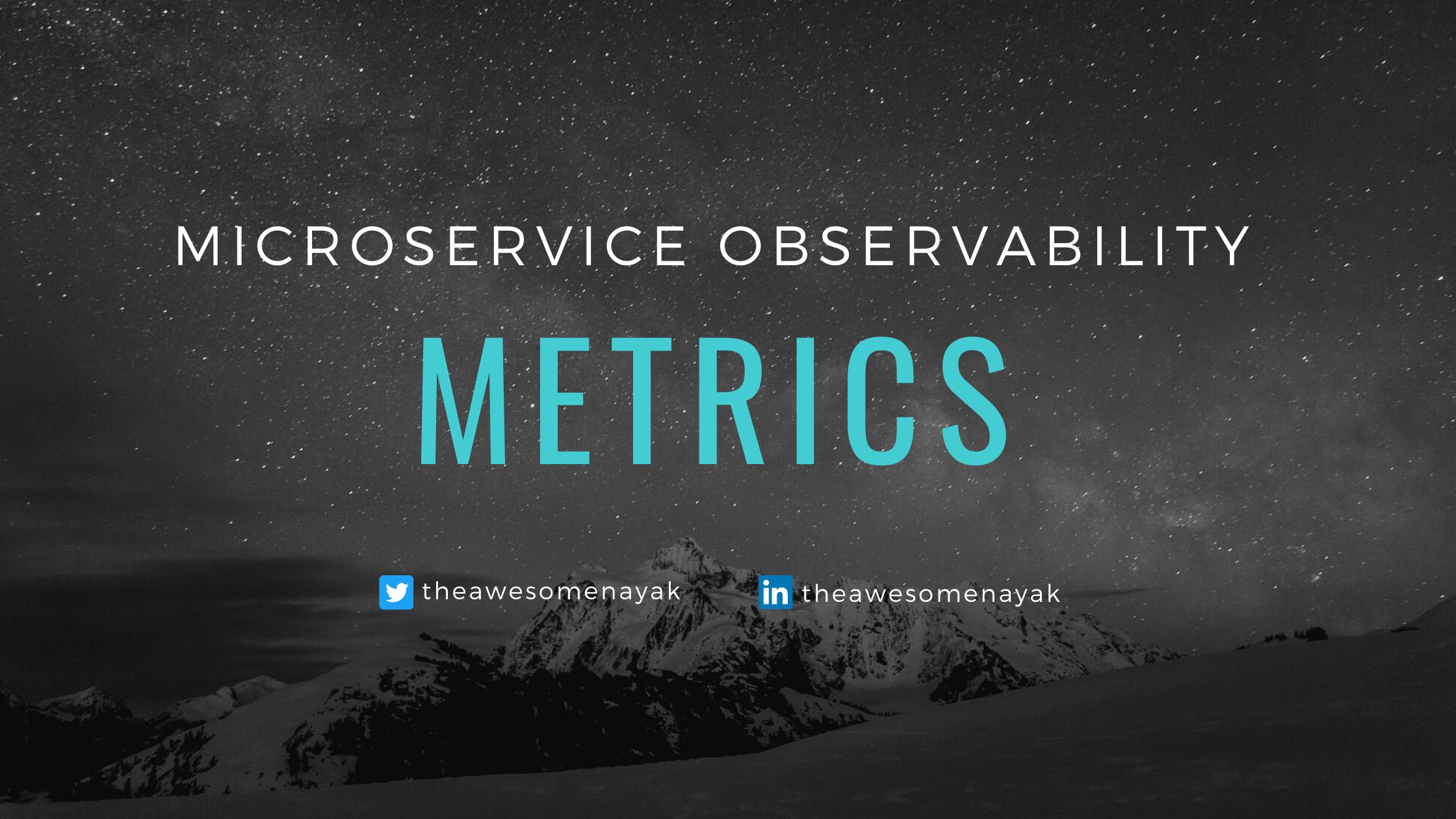 In my previous article, I talked about the importance of logs and the differences between structured and unstructured logging. Logs are easy to integrate into your application and provide the ability to represent any type of data in the form of strings.
In my previous article, I talked about the importance of logs and the differences between structured and unstructured logging. Logs are easy to integrate into your application and provide the ability to represent any type of data in the form of strings.
82. An Introduction to Microservices and Serverless
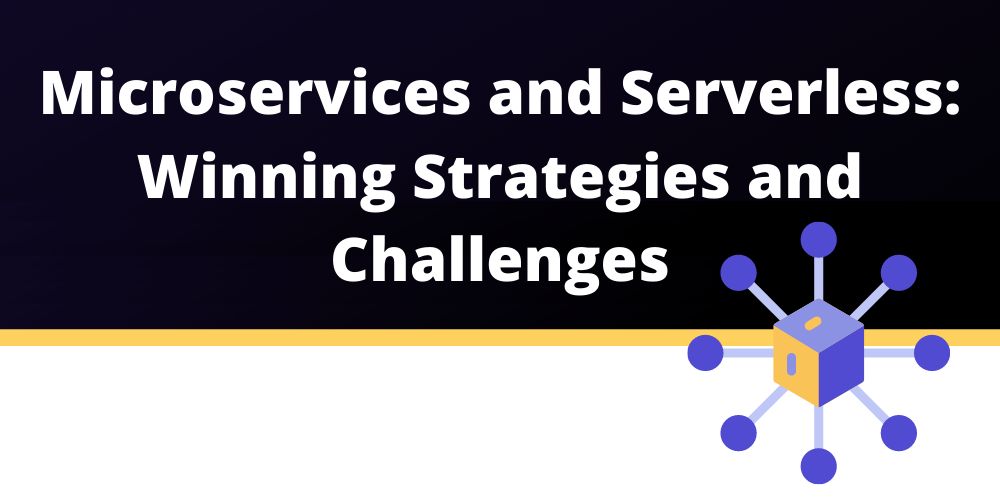 The concept of a microservice perfectly fits the structure of a serverless function, which easily enables deployment and runtime isolation for different services. On the storage side, services such as DynamoDB also make it easier to have independent databases for each microservice and scale them independently (when required or desirable).
The concept of a microservice perfectly fits the structure of a serverless function, which easily enables deployment and runtime isolation for different services. On the storage side, services such as DynamoDB also make it easier to have independent databases for each microservice and scale them independently (when required or desirable).
83. Serverless Vs Microservices Architecture - A Deep Dive
 Companies need to be thinking long-term before even starting a software development project. These needs are solved at the level of architecture: business owners want to assure agility, scalability, and performance.
Companies need to be thinking long-term before even starting a software development project. These needs are solved at the level of architecture: business owners want to assure agility, scalability, and performance.
84. Choosing the Right Microservices Framework
 Microservices architecture is a methodology that allows you to split a monolithic single application into small applications and services.
Microservices architecture is a methodology that allows you to split a monolithic single application into small applications and services.
85. Microservices and Service Mesh with Istio, Explained
 Application builds when broken down into multiple smaller service components, are known as Microservices. When compared to the traditional Monolithic way, a Microservice Architecture treats each microservice as a standalone entity/module, essentially helping to ease the maintenance of its code and related infrastructure. Each microservice of an application can be written in a different technology stack, and further be deployed, optimized and managed independently.
Application builds when broken down into multiple smaller service components, are known as Microservices. When compared to the traditional Monolithic way, a Microservice Architecture treats each microservice as a standalone entity/module, essentially helping to ease the maintenance of its code and related infrastructure. Each microservice of an application can be written in a different technology stack, and further be deployed, optimized and managed independently.
86. How to Set Up an NGINX Ingress Controller on PMKFT
 The vast majority of Kubernetes clusters are used to host containers that process incoming requests from microservices to full web applications. Having these incoming requests come into a central location, then get handed out via services in Kubernetes, is the most secure way to configure a cluster. That central incoming point is an ingress controller.
The vast majority of Kubernetes clusters are used to host containers that process incoming requests from microservices to full web applications. Having these incoming requests come into a central location, then get handed out via services in Kubernetes, is the most secure way to configure a cluster. That central incoming point is an ingress controller.
87. Microservices Deserve Modern Programming Platforms: Java May Not be the Best Option
 Microservices are very popular today, even in traditional corporate IT shops. Often though they are implemented using languages, such as Java, born in the early ’90s and designed for a world of monolithic applications. Do you remember the big old Application Servers?
Microservices are very popular today, even in traditional corporate IT shops. Often though they are implemented using languages, such as Java, born in the early ’90s and designed for a world of monolithic applications. Do you remember the big old Application Servers?
88. ‘Security’ in Cloud-Native: Everything You Ever Want To Know

89. Kafdrop
 Open-Source Web UI for Apache Kafka
Open-Source Web UI for Apache Kafka
90. 5 Books to Learn Microservices in Java with Spring Boot and Spring Cloud
91. The Secret Guide To Choosing Between Monolith And Microservices
 Monolith or microservices? Both architectures have pros and cons, and each particular case should be investigated. UppLabs had a project with a concrete goal — optimization of application performance by migration from a monolithic system to the new microservices’ infrastructure. We came up with a solution that we’re happy to share with you in detail.
Monolith or microservices? Both architectures have pros and cons, and each particular case should be investigated. UppLabs had a project with a concrete goal — optimization of application performance by migration from a monolithic system to the new microservices’ infrastructure. We came up with a solution that we’re happy to share with you in detail.
92. Why Every API Needs a Clock
 Limiting flow was fundamental to TCPs success, why is it any different for APIs?
Limiting flow was fundamental to TCPs success, why is it any different for APIs?
93. Complicated patterns aren’t always that complicated. Usually it’s the simple ones that bite you.
 Staring at the maze of interconnected passageways of the microservice system, I immediately recognized the problems.
Staring at the maze of interconnected passageways of the microservice system, I immediately recognized the problems.
94. Let's Go! 5 Use Cases When You Need Golang for Your Tech Project
 Reveal why there is hype around Golang and describe the best application variants for this programming language as well as cases when Go is not the best choice.
Reveal why there is hype around Golang and describe the best application variants for this programming language as well as cases when Go is not the best choice.
95. Deploying Complex Microservice Apps Using PMKFT [A How To Guide]
 In this tutorial we are going to expand our examples with deploying a more complex microservice. The idea is to make you more comfortable with the platform and to show you how you can leverage it for more advanced scenarios.
In this tutorial we are going to expand our examples with deploying a more complex microservice. The idea is to make you more comfortable with the platform and to show you how you can leverage it for more advanced scenarios.
96. How to Route Traffic Between Microservices During Development
 Route traffic between microservices during development with this one simple trick that will save you setup time and, well, headache.
Route traffic between microservices during development with this one simple trick that will save you setup time and, well, headache.
97. Rethinking Programming: The Network in the Language
 With the emergence of microservices architecture, applications are developed by using a large number of smaller programs. These programs are built individually and deployed into a platform where they can scale independently. These programs communicate with each other over the network through simple Application Programming Interfaces (APIs). With the disaggregated and network distributed nature of these applications, developers have to deal with the Fallacies of Distributed Computing as part of their application logic.
With the emergence of microservices architecture, applications are developed by using a large number of smaller programs. These programs are built individually and deployed into a platform where they can scale independently. These programs communicate with each other over the network through simple Application Programming Interfaces (APIs). With the disaggregated and network distributed nature of these applications, developers have to deal with the Fallacies of Distributed Computing as part of their application logic.
98. Why Implementing Microservices on AWS Is Indispensable to a Modern Architecture for Business Agility
 AWS customers build microservices on 3 common patterns: API-driven, event-driven, & data streaming. The blog covers the common characterics of microservices.
AWS customers build microservices on 3 common patterns: API-driven, event-driven, & data streaming. The blog covers the common characterics of microservices.
99. 7 Best Java EE Courses for Beginners
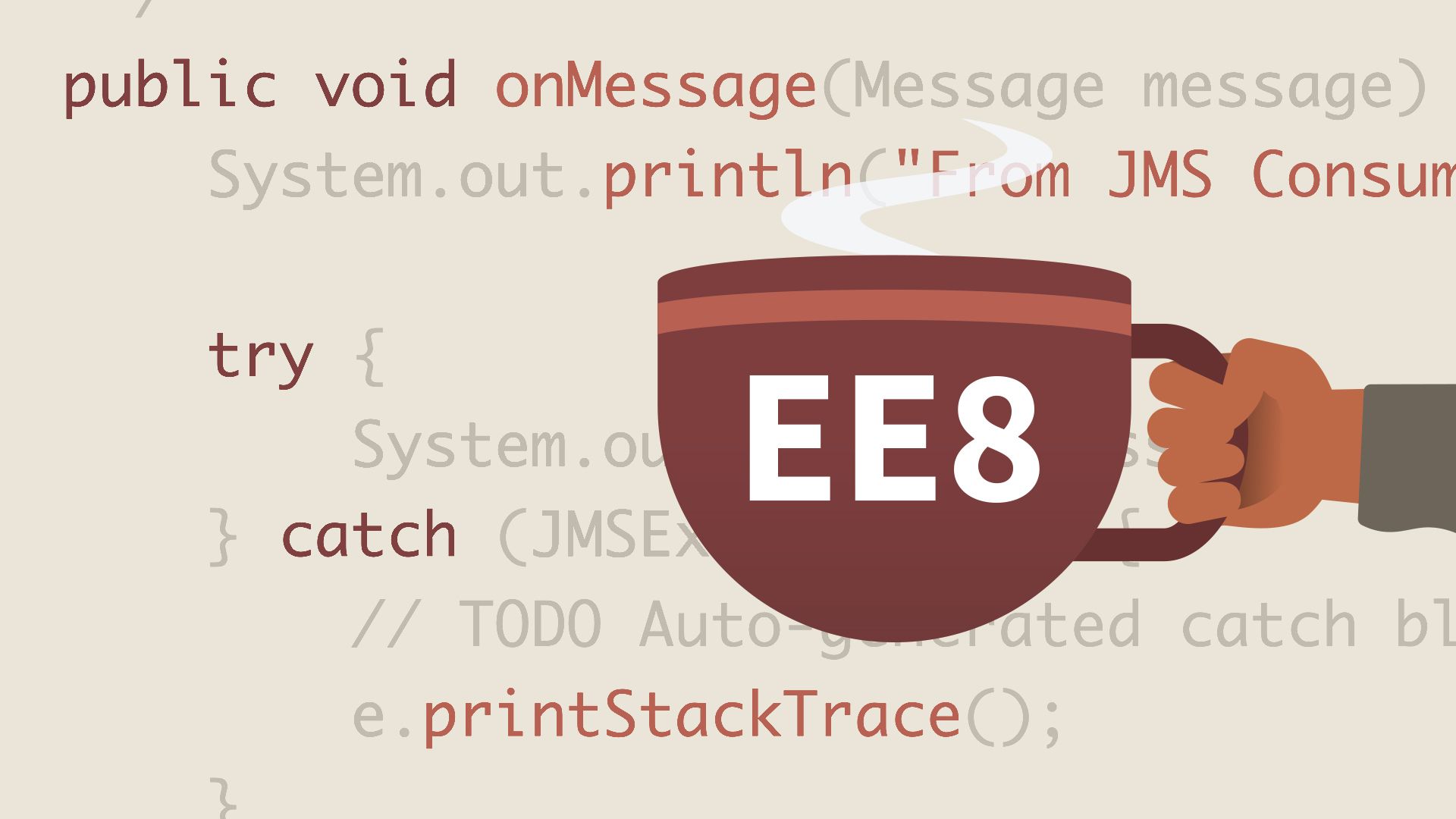 Hello guys, If you are a Java developer or someone who wants to learn Java EE for web development and looking for some courses to kickstart your learning, then you have come to the right place.
Hello guys, If you are a Java developer or someone who wants to learn Java EE for web development and looking for some courses to kickstart your learning, then you have come to the right place.
100. Data Services for the Masses
 I’ve held several roles in my career in IT, ranging from software developer to enterprise architect to developer advocate. I’ve always been fascinated by the role that data plays in our applications—putting it into databases, getting it back out quickly, making sure it remains accurate when transferred between systems. Many of the hardest problems I’ve encountered have centered around data. For example:
I’ve held several roles in my career in IT, ranging from software developer to enterprise architect to developer advocate. I’ve always been fascinated by the role that data plays in our applications—putting it into databases, getting it back out quickly, making sure it remains accurate when transferred between systems. Many of the hardest problems I’ve encountered have centered around data. For example:
101. Why Microservices Suck At Machine Learning...and What You Can Do About It

102. Secure Microservices with Kong and Ory
 Microservice architecture is nowadays almost a standard for backend development. An API gateway is an excellent way to connect a group of microservices
Microservice architecture is nowadays almost a standard for backend development. An API gateway is an excellent way to connect a group of microservices
103. How To Choreograph Event-Driven Microservices
 Don't get trapped in the Death Star! Choreographed microservices have all the benefits of a loosely coupled architecture, and only some of the pitfalls.
Don't get trapped in the Death Star! Choreographed microservices have all the benefits of a loosely coupled architecture, and only some of the pitfalls.
104. How To Start Using Microservices
 Microservices are completely disrupting the way we build applications nowadays. This is one of the hottest trends when it comes to software architecture. More and more developers are adopting it.
Microservices are completely disrupting the way we build applications nowadays. This is one of the hottest trends when it comes to software architecture. More and more developers are adopting it.
105. A Detailed Introduction to Service-Oriented Programming
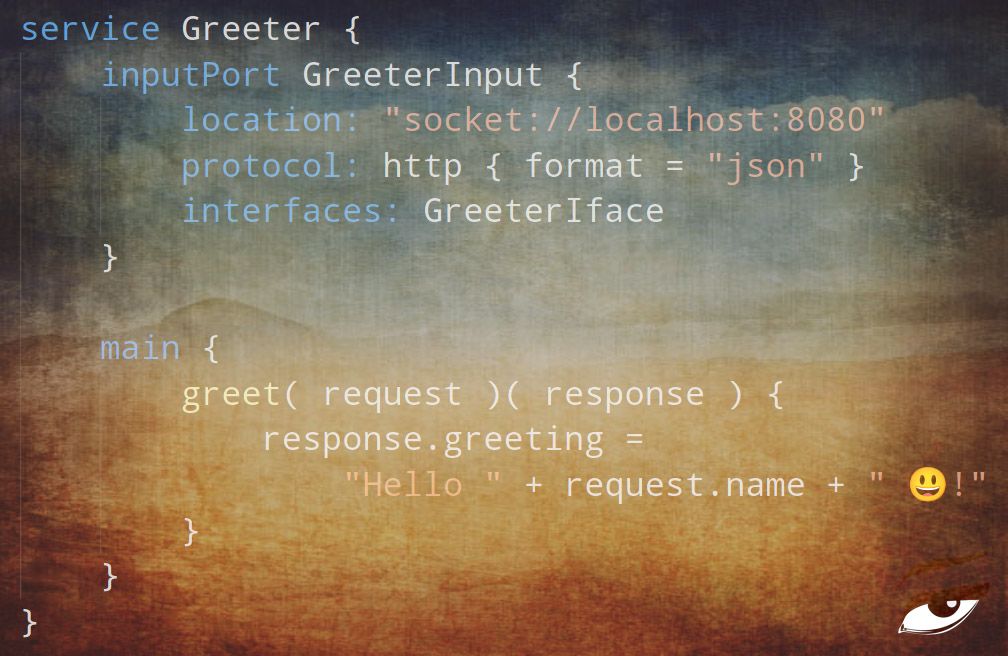 Some principles are emerging for what one might call service-oriented programming languages. The principles are general, so they can help when thinking about code even when operating outside of these languages.
Some principles are emerging for what one might call service-oriented programming languages. The principles are general, so they can help when thinking about code even when operating outside of these languages.
106. The State of Containers in 2020
 Containerization has come a long way and containers have completely revolutionized the way companies build, test, package and deliver software today. Containers are good for packaging any software. Big or small. Microservices are great candidates to be packaged and delivered with container images. With Microservices architecture, the large monolith is decoupled into several mini services that work independently.
Containerization has come a long way and containers have completely revolutionized the way companies build, test, package and deliver software today. Containers are good for packaging any software. Big or small. Microservices are great candidates to be packaged and delivered with container images. With Microservices architecture, the large monolith is decoupled into several mini services that work independently.
107. Awesome Hacks To Master AWS Step Functions
 The use of serverless computing has become a must nowadays, and some of you may already know a thing or two about Amazon Web Services like Lambda Functions, Step Functions, and other services AWS provides. However, if this is the first time you hear about them – fantastic!
The use of serverless computing has become a must nowadays, and some of you may already know a thing or two about Amazon Web Services like Lambda Functions, Step Functions, and other services AWS provides. However, if this is the first time you hear about them – fantastic!
108. Monolith to Microservices: Build Your First Microservice App With Spring Boot
 Microservices are a part of cloud computing which will become more important over time. This is how to create microservices using Spring Boot for the process.
Microservices are a part of cloud computing which will become more important over time. This is how to create microservices using Spring Boot for the process.
109. How To Use Amazon API Gateway to Decouple and Scale Serverless Architectures
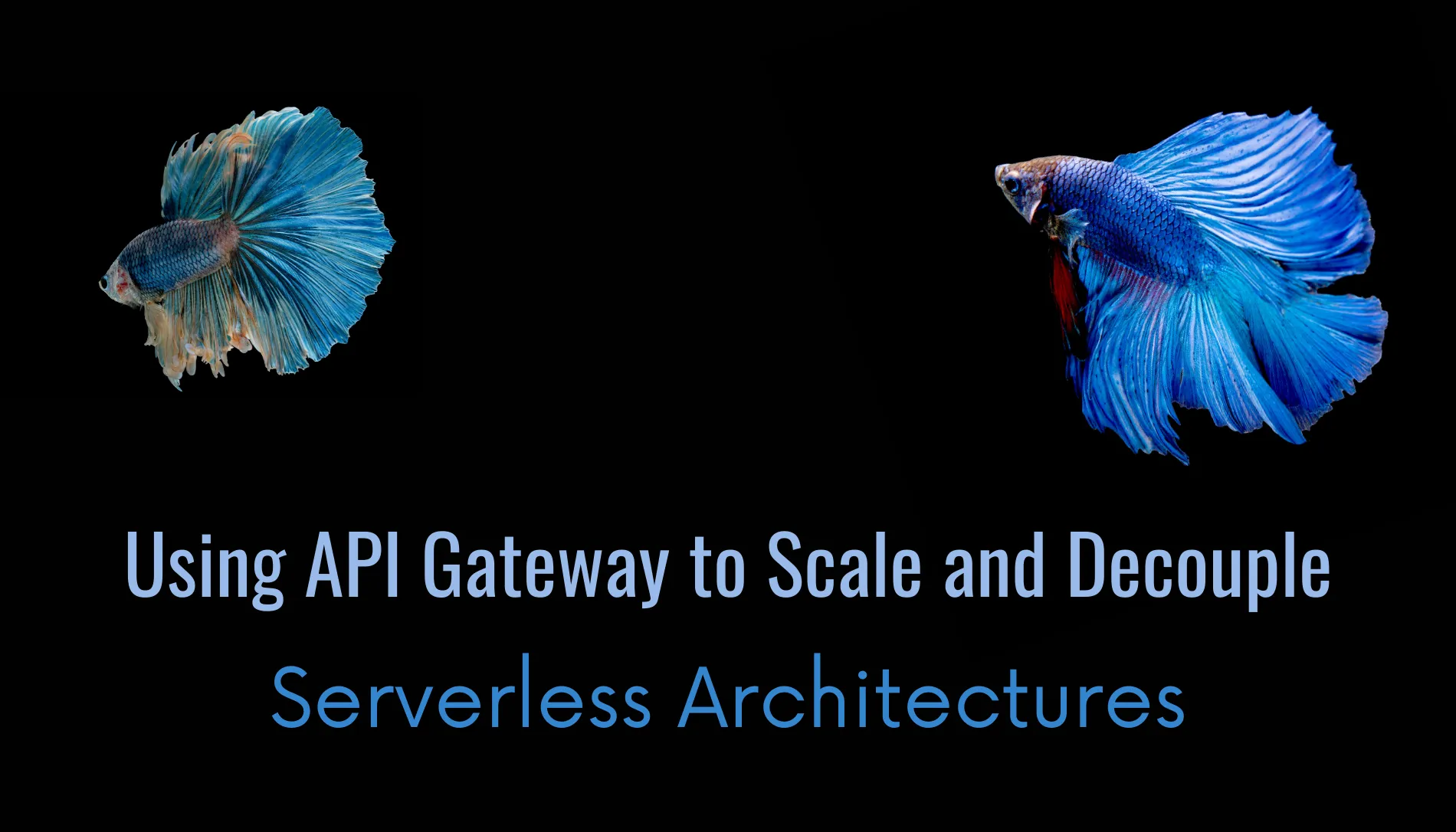 One of the benefits of Serverless architectures is the possibility of scaling applications without worrying about load balancers and clusters of servers. While services like AWS Lambda hold their promises on this area, there are usually misconceptions about how they work.
One of the benefits of Serverless architectures is the possibility of scaling applications without worrying about load balancers and clusters of servers. While services like AWS Lambda hold their promises on this area, there are usually misconceptions about how they work.
110. Pool Architecture for Saas
 Most of the startups facing scaling problems move to microservices. Inspired by cell-based architecture, it split services per function and scale only specific features. It works especially well for B2C where traffic is uniformly spread across users. However, B2B can face a different type of scaling issue where only one user is scaling. A pool architecture is a simpler yet powerful solution, used both by GAFA and fast-growing startups.
Most of the startups facing scaling problems move to microservices. Inspired by cell-based architecture, it split services per function and scale only specific features. It works especially well for B2C where traffic is uniformly spread across users. However, B2B can face a different type of scaling issue where only one user is scaling. A pool architecture is a simpler yet powerful solution, used both by GAFA and fast-growing startups.
111. Why API Management and Service Mesh Are Complementary Patterns for Different Use Cases
 Insights into the Differences Between API Gateways and Service Mesh
Insights into the Differences Between API Gateways and Service Mesh
112. Building QR Code Generator in Serverless World using Kumologica
 The concepts of social distancing, contactless approach and safety first have now become the new normal in our present COVID induced downturn.
The concepts of social distancing, contactless approach and safety first have now become the new normal in our present COVID induced downturn.
113. Microservices vs. Monolithic Architecture
 The concept of microservices, an approach to designing a software application as a set of small services, has been around since at least 2015.Delivering benefits such as the independent deployability and scalability of components, microservices are all the rage today. This is because these microservices benefits translate into incredibly faster software development speeds. With consumers being quick to change their preferences and behaviors, microservices adopters are able to keep up. Life is now great, they say.As much as 56% of companies participating in a recent IMB survey plan to adopt a microservices approach in the next 24 months. Almost 80% of current users say their business will likely step up investment in microservices.Microservices advantages have prompted Netflix, Amazon, eBay, Twitter, and many other tech giants to migrate from monolithic to microservices architecture.But should your company use microservices?It depends on the context and if microservices pros outweigh the cons for your application.This blog provides an overview of a microservices vs. monolithic approach and five key benefits of using a microservices architecture. It also shares some of ITRex’s microservices experience and offers tips on when business should (not) use microservices. Dive in.
The concept of microservices, an approach to designing a software application as a set of small services, has been around since at least 2015.Delivering benefits such as the independent deployability and scalability of components, microservices are all the rage today. This is because these microservices benefits translate into incredibly faster software development speeds. With consumers being quick to change their preferences and behaviors, microservices adopters are able to keep up. Life is now great, they say.As much as 56% of companies participating in a recent IMB survey plan to adopt a microservices approach in the next 24 months. Almost 80% of current users say their business will likely step up investment in microservices.Microservices advantages have prompted Netflix, Amazon, eBay, Twitter, and many other tech giants to migrate from monolithic to microservices architecture.But should your company use microservices?It depends on the context and if microservices pros outweigh the cons for your application.This blog provides an overview of a microservices vs. monolithic approach and five key benefits of using a microservices architecture. It also shares some of ITRex’s microservices experience and offers tips on when business should (not) use microservices. Dive in.
114. Data Access for Microservices
 If you want to access data in a distributed environment such as in a microservice architecture, then data services are the way to go. The idea is to create a data abstraction layer (DAL) that the rest of the system’s applications and services can share. Thus, a data service gives you a generalized interface to the data you’re exposing and provides access to it in a standard manner. This would be in a well-understood protocol and a known data format. For example, a popular approach is to use JSON via HTTP/S.
If you want to access data in a distributed environment such as in a microservice architecture, then data services are the way to go. The idea is to create a data abstraction layer (DAL) that the rest of the system’s applications and services can share. Thus, a data service gives you a generalized interface to the data you’re exposing and provides access to it in a standard manner. This would be in a well-understood protocol and a known data format. For example, a popular approach is to use JSON via HTTP/S.
115. Introduction To Distributed Tracing Pattern
 A distributed architecture brings in several challenges when it comes to operability and monitoring. Here, one may be dealing with tens if not hundreds of microservices, each of which may or may not have been built by the same team.
A distributed architecture brings in several challenges when it comes to operability and monitoring. Here, one may be dealing with tens if not hundreds of microservices, each of which may or may not have been built by the same team.
116. Microservices & Microservice Architectures: A Deep Dive into The Fundamentals
 I’m Andrew Levine, the CEO of Koinos Group, and below you will find our second episode of the Koinos Group podcast in which I’ll be exploring microservice architectures.
I’m Andrew Levine, the CEO of Koinos Group, and below you will find our second episode of the Koinos Group podcast in which I’ll be exploring microservice architectures.
117. How To Use OpenTelemetry And Jaeger To Implement Distributed Tracing And APM
 Recent open source contributions to Jaeger and OpenTelemetry pave the way for APM capabilities based on distributed tracing and CNCF stack
Recent open source contributions to Jaeger and OpenTelemetry pave the way for APM capabilities based on distributed tracing and CNCF stack
118. An Introduction to Microservice Messaging in Kubernetes
 In this article, I’ll share the benefits of messaging in Kubernetes and the difficulties that can come with legacy solutions.
In this article, I’ll share the benefits of messaging in Kubernetes and the difficulties that can come with legacy solutions.
119. The Twelve-Factor App: 12 Best Practices For Microservices
 Summary
Summary
120. How To Develop And Deploy Micro-Frontends Using Single-Spa Framework
 Micro-frontends are the future of frontend web development. Inspired by microservices, which allow you to break up your backend into smaller pieces, micro-frontends allow you to build, test, and deploy pieces of your frontend app independently of each other. Depending on the micro-frontend framework you choose, you can even have multiple micro-frontend apps — written in React, Angular, Vue, or anything else — coexisting peacefully together in the same larger app!
Micro-frontends are the future of frontend web development. Inspired by microservices, which allow you to break up your backend into smaller pieces, micro-frontends allow you to build, test, and deploy pieces of your frontend app independently of each other. Depending on the micro-frontend framework you choose, you can even have multiple micro-frontend apps — written in React, Angular, Vue, or anything else — coexisting peacefully together in the same larger app!
121. How to Build a Secure REST API with OpenID Connect
 In this article, we’ll take a look at building a secured REST API by integrating with Okta as the identity provider via OpenID Connect (OIDC). This article is based on the DZone article Building a Java REST API with Quarkus, which explains how to create a Java REST API with Quarkus and Okta. We will be implementing a similar scenario here by using Ballerinalang, and show how it’s simpler and more straightforward to implement compared to our Java counterpart.
In this article, we’ll take a look at building a secured REST API by integrating with Okta as the identity provider via OpenID Connect (OIDC). This article is based on the DZone article Building a Java REST API with Quarkus, which explains how to create a Java REST API with Quarkus and Okta. We will be implementing a similar scenario here by using Ballerinalang, and show how it’s simpler and more straightforward to implement compared to our Java counterpart.
122. How to Quickly Generate Microservices with Yeoman
 A quick guide to creating a Yeoman generator for building microservices with an example of Express.js and Typescript app.
A quick guide to creating a Yeoman generator for building microservices with an example of Express.js and Typescript app.
123. The Only Decoupling Checklist You Need To Know About
 My team has recently successfully decoupled one of the critical business domains of the company. The initial integration had such a tough deadline that the only way to meet it was to add code to the monolith. And… The feature that went from conception to production in three weeks ended up taking almost one year to decouple.
My team has recently successfully decoupled one of the critical business domains of the company. The initial integration had such a tough deadline that the only way to meet it was to add code to the monolith. And… The feature that went from conception to production in three weeks ended up taking almost one year to decouple.
124. Managing Microservices with Service Mesh: A Control Plane for your Application

125. Communication Over Microservices
 Proper choice of the communication protocol over Microservices makes the application more responsive and efficient. Various aspects need to be
considered regarding communication before breaking down into services.
Proper choice of the communication protocol over Microservices makes the application more responsive and efficient. Various aspects need to be
considered regarding communication before breaking down into services.
126. Basic Guide To Building Microservices With MongoDB, NodeJs, And Express
 Most of us have gone through tough times where you have a large scale application which has a bunch of features, API integrations, database connections, etc. New features and updates get released, and of course you need to fix the bugs and maintain the code.
Most of us have gone through tough times where you have a large scale application which has a bunch of features, API integrations, database connections, etc. New features and updates get released, and of course you need to fix the bugs and maintain the code.
127. Everything You Need to Know About AWS DynamoDB
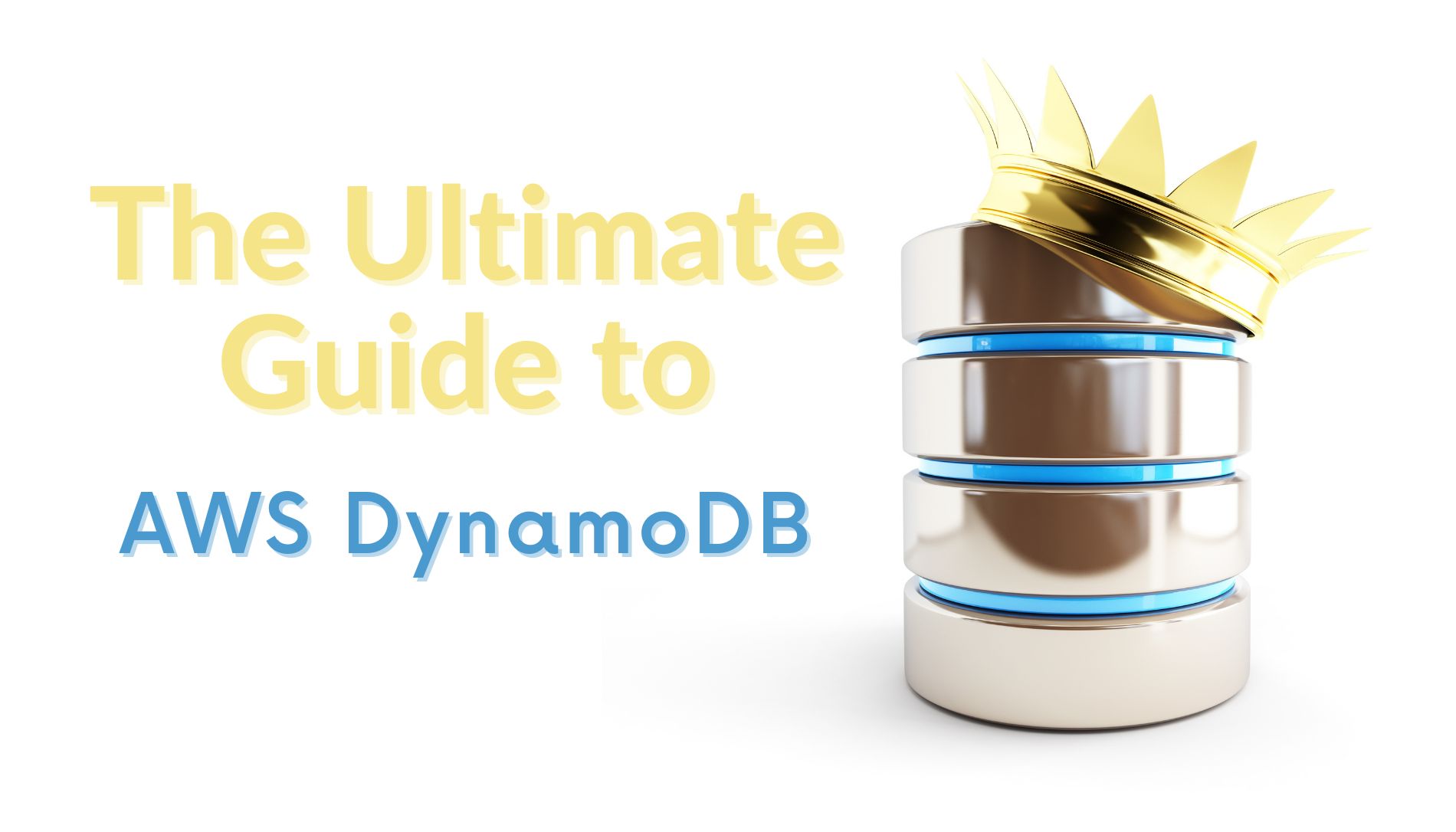 AWS DynamoDB changed the database game in Serverless and continues to do so, as its design repeatedly proves its huge value.
AWS DynamoDB changed the database game in Serverless and continues to do so, as its design repeatedly proves its huge value.
128. 3 Top Resources To Learn About Apache Kafka
 Top 3 books and tutorials on Apache Kafka
Top 3 books and tutorials on Apache Kafka
129. Developing, Deploying and Testing Flask Applications on Kubernetes - Part I
 In this step by a step blog post, that illustrates how to integrate Python Flask applications with Docker and run them in a Kubernetes cluster, we will cover the following topics:
In this step by a step blog post, that illustrates how to integrate Python Flask applications with Docker and run them in a Kubernetes cluster, we will cover the following topics:
130. Kong Plugins as Microservices: Writing a Single-Plugin Server for Kong in Go
 Many developers and DevOps engineers have been deploying Kong Gateway in front of their microservices-based applications.
Many developers and DevOps engineers have been deploying Kong Gateway in front of their microservices-based applications.
131. Exploring Differences Between Monitoring And Observability
 Monitoring vs Observability: in this article, we're explaining what is observability exactly and how does it differ from monitoring.
Monitoring vs Observability: in this article, we're explaining what is observability exactly and how does it differ from monitoring.
132. The Essential Guide to Pod Eviction On Kubernetes
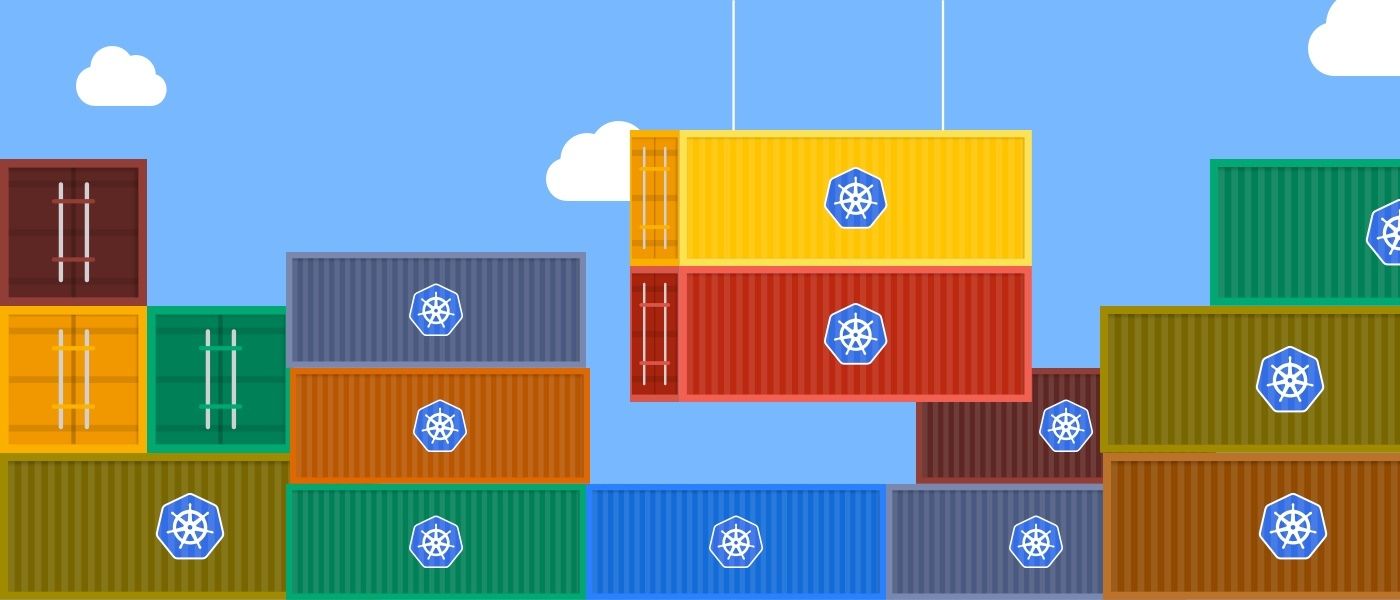 By nature, pods in Kubernetes clusters are ephemeral. They can be created, killed, and moved around by the scheduler. This may occasionally cause disruption in the microservices if pods are not configured properly.
By nature, pods in Kubernetes clusters are ephemeral. They can be created, killed, and moved around by the scheduler. This may occasionally cause disruption in the microservices if pods are not configured properly.
133. Microservices and CQRS: Why Business Should Care
 We have created this blog post for business stakeholders managing the development of a software system or product, those looking to find ways to reduce cost and time to market. This post will be useful for those whose technical background is a bit outdated or isn’t sufficient to make that judgment call. We will look at how to approach architecture planning so that the product is scalable and the money is spent wisely. Also, we will show the example of how CQRS can help in the implementation of client applications and whether microservices is indeed the panacea.
We have created this blog post for business stakeholders managing the development of a software system or product, those looking to find ways to reduce cost and time to market. This post will be useful for those whose technical background is a bit outdated or isn’t sufficient to make that judgment call. We will look at how to approach architecture planning so that the product is scalable and the money is spent wisely. Also, we will show the example of how CQRS can help in the implementation of client applications and whether microservices is indeed the panacea.
134. Building Microservices With Nameko
 What is Nameko?
Nameko is a framework for building lightweight, highly scalable and fault-tolerant service in Python.
What is Nameko?
Nameko is a framework for building lightweight, highly scalable and fault-tolerant service in Python.
135. What is a Service Mesh?
 In our previous post on API Gateways we discussed how services handle external client to service (North-South) traffic.
In our previous post on API Gateways we discussed how services handle external client to service (North-South) traffic.
136. Monitoring Microservices: A Step By Step Guide
 Monitoring microservices in the right way is one of the biggest challenges nowadays. This blog will guide you to overcome the monitoring challenges easily.
Monitoring microservices in the right way is one of the biggest challenges nowadays. This blog will guide you to overcome the monitoring challenges easily.
137. Monitor Your Kubernetes Cluster Events With EventRouter, Golang, and Kafka
 In this article, I will show you how to build such a pipeline for processing and storing Kubernetes cluster events.
In this article, I will show you how to build such a pipeline for processing and storing Kubernetes cluster events.
138. The Dark Side of Microservices, Explained
 There is an endless supply of blog posts, white papers, and slide decks, evangelizing the virtues of microservices. They talk about how microservices “increase agility,” are “more scalable,” and promise that when you make the switch, engineers will be pounding at your office door looking for a job.
There is an endless supply of blog posts, white papers, and slide decks, evangelizing the virtues of microservices. They talk about how microservices “increase agility,” are “more scalable,” and promise that when you make the switch, engineers will be pounding at your office door looking for a job.
139. Monitoring And Orchestrating Your Microservices Landscape using Workflow Automation (Part 2 of 7)
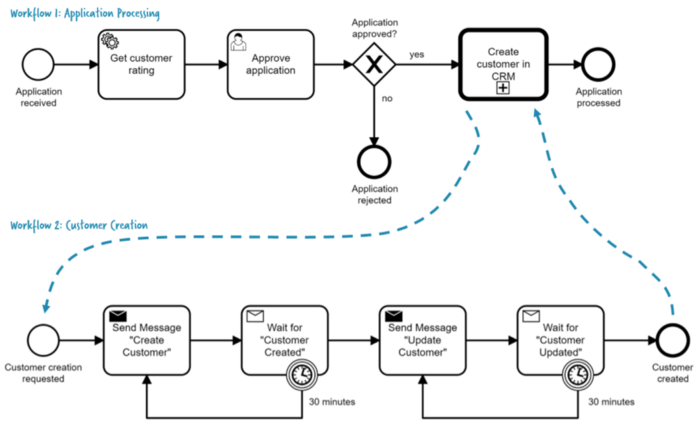 On Wednesday, March 11, 2020, I conducted the webinar titled “Monitoring & Orchestrating Your Microservices Landscape using Workflow Automation.” Not only was I overwhelmed by the number of attendees, but we also got a huge list of interesting questions before and especially during the webinar. Some of them were answered, but a lot of them were not.
On Wednesday, March 11, 2020, I conducted the webinar titled “Monitoring & Orchestrating Your Microservices Landscape using Workflow Automation.” Not only was I overwhelmed by the number of attendees, but we also got a huge list of interesting questions before and especially during the webinar. Some of them were answered, but a lot of them were not.
140. An Introduction to Micro-Frontends in Enterprise Applications (part 1)
 Leverage webpack module federation to build a scalable micro-frontends architecture.
Leverage webpack module federation to build a scalable micro-frontends architecture.
141. Introduction to Event Streaming with Kafka and Kafdrop
 Event sourcing, eventual consistency, microservices, CQRS... These are quickly becoming household names in mainstream application development. But do you know what makes them tick? What are the basic building blocks required to assemble complex, business-centric applications from fine-grained services without turning the lot into a big ball of mud?
Event sourcing, eventual consistency, microservices, CQRS... These are quickly becoming household names in mainstream application development. But do you know what makes them tick? What are the basic building blocks required to assemble complex, business-centric applications from fine-grained services without turning the lot into a big ball of mud?
142. Distributed Denial Of Service (DDOS) Mitigation
 In the current age of big data and internet businesses it is a constant struggle for an organization to prevent data breaches and protect the data of their users. The current landscape of cyber security is still evolving and attempts are being made to use Artifical Intelligence to protect systems from attacks and data breaches.
In the current age of big data and internet businesses it is a constant struggle for an organization to prevent data breaches and protect the data of their users. The current landscape of cyber security is still evolving and attempts are being made to use Artifical Intelligence to protect systems from attacks and data breaches.
143. How CI/CD and Microservices Led to Kubernetes: Kube Explained Part 1
 Engineering teams have always had constant pressure to deliver software faster, cheaper, and more reliably. As a result, many of the recent trends in backend infrastructure have been driven by these factors.
Engineering teams have always had constant pressure to deliver software faster, cheaper, and more reliably. As a result, many of the recent trends in backend infrastructure have been driven by these factors.
144. KubeMQ Secrets To Build A Great Kubernetes-based Solution In A Hybrid Environment
 A messaging platform that was purposefully built utilizing Kubernetes is a crucial component to successful deployments in hybrid and edge environments.
A messaging platform that was purposefully built utilizing Kubernetes is a crucial component to successful deployments in hybrid and edge environments.
145. Micro Frontends: Extending Microservices To Frontend Development
 Extending The Microservice Idea To Frontend Development
Extending The Microservice Idea To Frontend Development
146. An Introduction to API Gateways
 Understanding what API Gateways are, how they differ from a reverse proxy & load balancer and their use in a microservices environment
Understanding what API Gateways are, how they differ from a reverse proxy & load balancer and their use in a microservices environment
147. Five Guidelines for Robust Logging
 This article describes best practices for standardized logging from the point of view of performance, debuggability, and security.
This article describes best practices for standardized logging from the point of view of performance, debuggability, and security.
148. Benefits of Using Docker for Microservices: 2020 Edition

149. How to Set up an API Gateway for Your Microservices
 How to deploy a single node Kong API gateway in front of multiple microservices?
How to deploy a single node Kong API gateway in front of multiple microservices?
150. How to Authenticate REST Services with OAuth2
 There are a few dependencies and considerations one should account for when getting a system with REST services authenticated with an OAuth2 Client for Java
There are a few dependencies and considerations one should account for when getting a system with REST services authenticated with an OAuth2 Client for Java
151. The Evolution of DevOps: Lessons for Organizations of all Sizes
 Having someone to lead the DevOps space early and instill the culture will reduce overall release cycles friction and shorten the time to market.
Having someone to lead the DevOps space early and instill the culture will reduce overall release cycles friction and shorten the time to market.
152. Getting to Know gRPC
 Need a quick beginner's guide to gRPC? What is it? How do you set up a client and server, and make an RPC call? All your answers are here!
Need a quick beginner's guide to gRPC? What is it? How do you set up a client and server, and make an RPC call? All your answers are here!
153. How to Ensure the Success of Microservices-based Projects
 Microservices-based projects are a great idea to deliver products in less time and with great flexibility/agility.
Microservices-based projects are a great idea to deliver products in less time and with great flexibility/agility.
154. Why Monolithic Architecture has a Bad Reputation
 Pros and Cons of Monolithic Architecture in its traditional incarnation or as a Distributed Monolith.
Pros and Cons of Monolithic Architecture in its traditional incarnation or as a Distributed Monolith.
155. Application Monitoring: Closing Observability Gaps with Custom Metrics
 Which application metrics should you collect for your microservices?
Which application metrics should you collect for your microservices?
156. Microservices? Why Not!
 The cost of microservices from a developer's perspective.
The cost of microservices from a developer's perspective.
157. Software Engineering Architectural Patterns Part1
 Choosing the right architecture for your project. Understanding common software architectural patterns that scale.
Choosing the right architecture for your project. Understanding common software architectural patterns that scale.
158. 5 Common Amazon SQS Issues
 Ready to fix your SQS queues?🔨 This article aims to help you solve the most common issues as quickly as possible. Let's dive in!
Ready to fix your SQS queues?🔨 This article aims to help you solve the most common issues as quickly as possible. Let's dive in!
159. The Cacophonies of Distributed Systems
 If you have never heard about Deutsch + Gosling’s fallacies of distributed computing, you are missing out big time! I encourage you to check them out here. Those delusions are widely considered in the distributed systems field as some of the most painful assumptions any junior systems designer, or architect can make. I like to call them “career-limiting choices”.
If you have never heard about Deutsch + Gosling’s fallacies of distributed computing, you are missing out big time! I encourage you to check them out here. Those delusions are widely considered in the distributed systems field as some of the most painful assumptions any junior systems designer, or architect can make. I like to call them “career-limiting choices”.
160. From Monoliths to Microservices: Migration in Practice
 This isn't another "break down the monolith" article. This post is about making the applicable decisions, measuring and verifying the results
This isn't another "break down the monolith" article. This post is about making the applicable decisions, measuring and verifying the results
161. The HTTP Status Codes You Need to Know

162. Building Your First Node-RED Flow: Basic Tutorial
 This post introduces a deep dive video tutorial where I teach you the fundamentals of Node-RED and at the same time, show you how to build a Weather dash
This post introduces a deep dive video tutorial where I teach you the fundamentals of Node-RED and at the same time, show you how to build a Weather dash
163. Difference Between Spring MVC and Spring Boot

164. Smart E-bike Kits: A Tour Inside Our Servers
 The Idea
The Idea
165. How to Use Kong Ingress Controller with Spring Boot Services
 Kong Ingress Controller allows users to include the power of Kong Gateway in existing Kubernetes implementations, all without much effort.
Kong Ingress Controller allows users to include the power of Kong Gateway in existing Kubernetes implementations, all without much effort.
166. 3 Free Ways to Learn Kubernetes and Red Hat OpenShift
 I've compiled a list of three resources where you can get started with Kubernetes and Red Hat OpenShift, Red Hat's enterprise Kubernetes platform.
I've compiled a list of three resources where you can get started with Kubernetes and Red Hat OpenShift, Red Hat's enterprise Kubernetes platform.
167. Securing Real-World Microservices With gRPC And Istio Service Mesh

168. How Shift-Right Testing Can Build Product Resiliency
 Shift-right testing improves product resiliency by uncovering issues that surface under heavy user traffic and are difficult to simulate in test environments.
Shift-right testing improves product resiliency by uncovering issues that surface under heavy user traffic and are difficult to simulate in test environments.
169. Building Java Microservices from Scratch
 Today, microservices architecture is a common approach to building a system. In this article, I will show you how to build microservices using Java and Spring.
Today, microservices architecture is a common approach to building a system. In this article, I will show you how to build microservices using Java and Spring.
170. Microservices and the Golden age of Infrastructure Automation Tools
 The dramatic shift in infrastructure availability is one of the main catalysts for the advent of microservices.
The dramatic shift in infrastructure availability is one of the main catalysts for the advent of microservices.
171. Event Sourcing 101
 In this article I will describe what is event sourcing, how it works, what are the implications, and how to make a basic implementation
In this article I will describe what is event sourcing, how it works, what are the implications, and how to make a basic implementation
172. How to Avoid Inconsistency Across Microservices
 In a microservice architecture, you can get dependencies that impose restrictions on the services used
In a microservice architecture, you can get dependencies that impose restrictions on the services used
173. Microservices: The Why and When
 With people switching to cloud-native strategy, we need an architecture that supports it. A variant of Service-oriented architecture, microservice architecture
With people switching to cloud-native strategy, we need an architecture that supports it. A variant of Service-oriented architecture, microservice architecture
174. Improving Security in your Microservices Architecture with Istio
 Security in a microservice architecture with Istio 1.12
Security in a microservice architecture with Istio 1.12
175. Web Application Development: Principles of Development Based on Microservices. Part 2.
 To use a microservice architecture, the developer needs to study special technologies that are applicable for such web app development.
To use a microservice architecture, the developer needs to study special technologies that are applicable for such web app development.
176. MACH Architecture: A 2023 Guide
 In this comprehensive guide, we'll look at MACH architecture, how it works, and what benefits it can offer your business in 2023.
In this comprehensive guide, we'll look at MACH architecture, how it works, and what benefits it can offer your business in 2023.
177. How a Unicorn Startup in Japan Leveraged the Power of Microservices
 Startup experience in Mercari. Road to microservices from monolith.
Startup experience in Mercari. Road to microservices from monolith.
178. Accessing Kubernetes Using Expose API and User Interface Using Sidecar Pattern
 Kubernetes is an open-source container-orchestration system for automating application deployment, scaling, and management.
Kubernetes is an open-source container-orchestration system for automating application deployment, scaling, and management.
179. Well-Architected Microservices
 This is a list of items that has helped me to build, run and scale microservices efficiently and securely.
This is a list of items that has helped me to build, run and scale microservices efficiently and securely.
180. Kafka Administration and Monitoring UI Tools
 Kafka itself comes with command line tools that can do all the
administration tasks, but those tools aren’t very convenient because
they are not integrated into one tool and you need to run a different
tool for different tasks. Moreover, it is getting difficult to work with them when your clusters grow large or when you have several clusters.
Kafka itself comes with command line tools that can do all the
administration tasks, but those tools aren’t very convenient because
they are not integrated into one tool and you need to run a different
tool for different tasks. Moreover, it is getting difficult to work with them when your clusters grow large or when you have several clusters.
181. React Application Architecture: Code splitting [Part 2]
 In the previous part we have learned about the components and how it affects our React app architecture.
In the previous part we have learned about the components and how it affects our React app architecture.
182. Launch Your Startup Idea in a Day
 Time is money, especially with startups. Check out how easy it can be to launch your startup idea using Render Unified Cloud
Time is money, especially with startups. Check out how easy it can be to launch your startup idea using Render Unified Cloud
183. How To Do Data Mapping in Kumologica
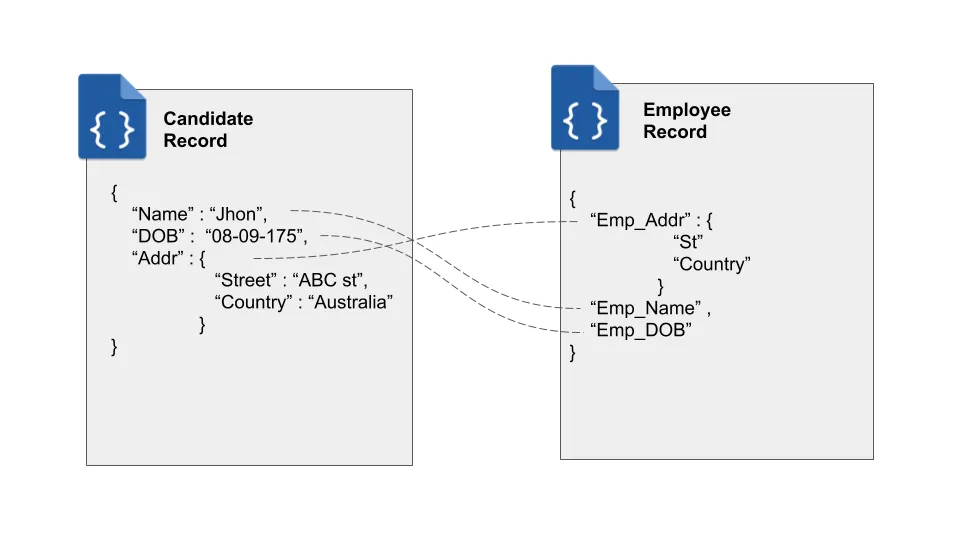 Data mapping is a key element in integration. Most of the prominent integration tools provide different capabilities for data mapping. In this article I thought of sharing on how data mapping can be achieved in Kumologica. Kumologica uses JSONata as the base for data mapping. JSONata is a Lightweight query and transformation language for JSON data. It supports complex queries expression which can be achieved with minimal syntax and has a location path semantics of Xpath 3.1.
Data mapping is a key element in integration. Most of the prominent integration tools provide different capabilities for data mapping. In this article I thought of sharing on how data mapping can be achieved in Kumologica. Kumologica uses JSONata as the base for data mapping. JSONata is a Lightweight query and transformation language for JSON data. It supports complex queries expression which can be achieved with minimal syntax and has a location path semantics of Xpath 3.1.
184. Have We Reached the Age of Modularity Maturity?
 while microservices come with their perks, the cons are so huge sometimes that they offset the pros. There are more manageable ways to achieve the same result.
while microservices come with their perks, the cons are so huge sometimes that they offset the pros. There are more manageable ways to achieve the same result.
185. How to Implement the Decorator Pattern in Microservices
 The Decorator pattern is a great fit for modifying the behaviour of a microservice. Native language support can help with applying it quickly and modularly.
The Decorator pattern is a great fit for modifying the behaviour of a microservice. Native language support can help with applying it quickly and modularly.
186. Path-Based Routing in Render with Kong API Gateway
 It's good practice to put an API gateway in front of your microservices-backed application. Path-based routing makes this possible when deploying to Render.
It's good practice to put an API gateway in front of your microservices-backed application. Path-based routing makes this possible when deploying to Render.
187. [ANN] Serverless Kubernetes Solution For Cloud-Native Apps by CTO.ai
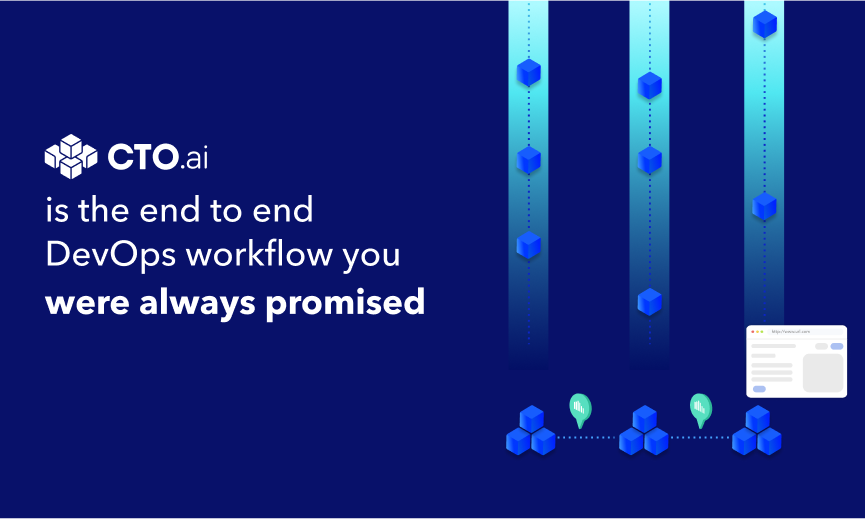 CTO.ai Launches Serverless Kubernetes Platform for Managing Cloud Native Apps
CTO.ai Launches Serverless Kubernetes Platform for Managing Cloud Native Apps
188. Creating Microservices in Nest.js
 This article attempts to demystify microservices by showing devs how to create a set of microservices using one of their favorite frameworks: Nest.js!
This article attempts to demystify microservices by showing devs how to create a set of microservices using one of their favorite frameworks: Nest.js!
189. How Agile Teams Shorten SDLC Using DevTestOps
 Moreover, the duty of code quality can slowly be forgotten in the developers’ minds as they know their work would be tested either way.
Moreover, the duty of code quality can slowly be forgotten in the developers’ minds as they know their work would be tested either way.
190. Application Deployment: Recipe for Great Serverless Strategy
 This is true for the most part, but Serverless apps also have a certain property that can make their deployment and maintenance time consuming.
This is true for the most part, but Serverless apps also have a certain property that can make their deployment and maintenance time consuming.
191. "We are all mad here." - 2021 Noonies Nominee
 "I was passionate about technology and gaming which led me to choose this path as my career and I love every bit about it."
"I was passionate about technology and gaming which led me to choose this path as my career and I love every bit about it."
192. How to Execute a Scheduled Task in Keycloak on Startup
 In this article, we will look at how to execute a scheduled task in Keycloak on startup using a Kafka consumer as an example.
In this article, we will look at how to execute a scheduled task in Keycloak on startup using a Kafka consumer as an example.
193. Meet John Jardin - #Noonies2021 Nominee, Full Stack Developer, CEO of Agilit-e
 Through his 21 year journey as a developer, John Jardin has managed over 350 projects for various companies. Learn more via this exclusive interview.
Through his 21 year journey as a developer, John Jardin has managed over 350 projects for various companies. Learn more via this exclusive interview.
194. How to Build a Decoupled Microservice Using Materialize
 One way to handle data in microservice architectures is to use decoupled microservices architecture. This form of architecture can bring many benefits.
One way to handle data in microservice architectures is to use decoupled microservices architecture. This form of architecture can bring many benefits.
195. Microservices and Frameworks, All You Need to Know
 We will look at the benefits of developing in microservices, the concept of frameworks and why you should consider them, and more.
We will look at the benefits of developing in microservices, the concept of frameworks and why you should consider them, and more.
196. A Serverless Perspective on AWS Elastic Load Balancing
 Everything you need to know about AWS Application Load Balancer (ALB) and whether or not it would be a good alternative to an API Gateway.
Everything you need to know about AWS Application Load Balancer (ALB) and whether or not it would be a good alternative to an API Gateway.
197. 51% of Business Leaders Believe They Will Be Left Behind If They Don't Innovate
 Learn what IT leaders are prioritizing one year into the COVID-19 pandemic, per new research on the adoption of microservices, open-source tech, and more.
Learn what IT leaders are prioritizing one year into the COVID-19 pandemic, per new research on the adoption of microservices, open-source tech, and more.
198. Getting Down and Dirty with Metric-based Alerting for AWS Lambda
 Discover how to set up metric-based alarms for AWS Lambda functions. See how to do it in CloudWatch vs Dashbird.
Discover how to set up metric-based alarms for AWS Lambda functions. See how to do it in CloudWatch vs Dashbird.
199. How You Can Reduce Costs on AWS Lambda
 As a Serverless computing service, Lambda already saves hundreds of thousands of dollars for many companies out there. While traditional server-based infrastructures usually lead to overprovisioning and waste, the Serverless pay-per-use model enables cost-effective cloud spending.
As a Serverless computing service, Lambda already saves hundreds of thousands of dollars for many companies out there. While traditional server-based infrastructures usually lead to overprovisioning and waste, the Serverless pay-per-use model enables cost-effective cloud spending.
200. Producers Guarantees for Event-driven Development
 Instead of consumers' delivery guarantees in message queues, in this article, we're going to talk about producers' guarantees in distributed systems.
Instead of consumers' delivery guarantees in message queues, in this article, we're going to talk about producers' guarantees in distributed systems.
201. Why Data Consistency is Important in a Microservices Architecture
 Data Consistency might be a pain in the ass. It is a well-known source of unexpected surprises. What is it? What does it depend on? Why is it so often overseen?
Data Consistency might be a pain in the ass. It is a well-known source of unexpected surprises. What is it? What does it depend on? Why is it so often overseen?
202. Your Friendly Service Mesh for Abstract Network Architecture - Istio
 There is a new hype in the DevOps world: Istio and service meshes. But why exactly is everyone suddenly migrating to Istio? In this post, we will examine whether it actually makes sense to use Istio and in which use cases it may help you (as well as when it’s simply an overkill).
There is a new hype in the DevOps world: Istio and service meshes. But why exactly is everyone suddenly migrating to Istio? In this post, we will examine whether it actually makes sense to use Istio and in which use cases it may help you (as well as when it’s simply an overkill).
203. Filestack Presents: Nerd Up: Scale Up - A Full-Day Online Conference
 On February 22, 2023, from 9:30 a.m. to 3:30 p.m. Central Time, Filestack will be hosting a full-day online conference.
On February 22, 2023, from 9:30 a.m. to 3:30 p.m. Central Time, Filestack will be hosting a full-day online conference.
204. Improving Your Web-Based App With Micro Frontends
 In this blog post, we will explore what micro frontends are, why they are beneficial, how to implement them in your project, and potential uses
In this blog post, we will explore what micro frontends are, why they are beneficial, how to implement them in your project, and potential uses
205. What Does REST in RESTful API?
 Everyone talks about RESTful APIs. Everyone use RESTful APIs. It even seems like, everything has RESTful APIs.
Everyone talks about RESTful APIs. Everyone use RESTful APIs. It even seems like, everything has RESTful APIs.
206. Eko Simanjuntak, 2020 Noonie Nominee, Loves to Explore Cloud Native Technologies
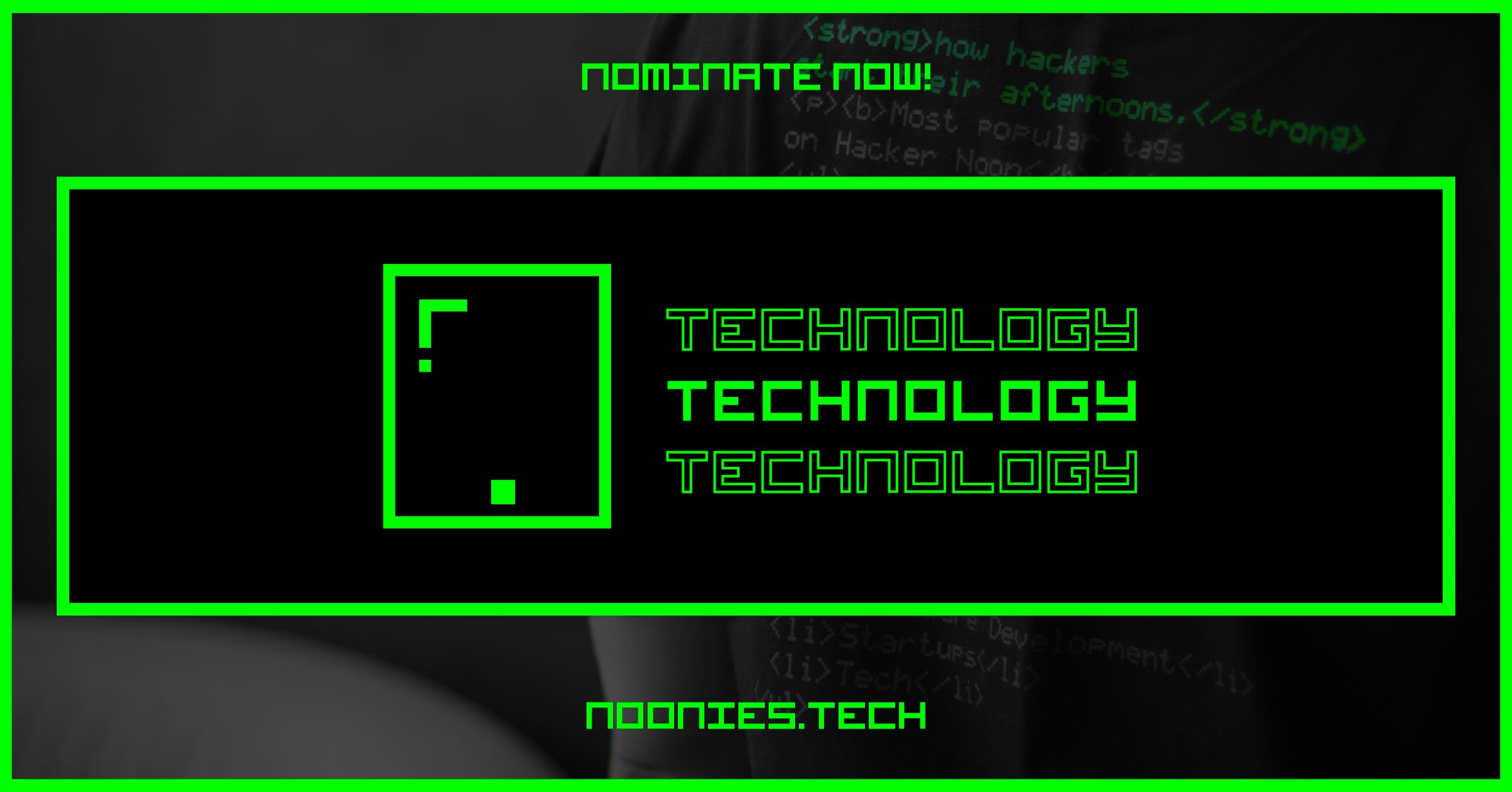 Go on, make a fellow human’s day and nominate the best YOUR best of 2020’s tech industry for a 2020 #Noonie, the tech industry’s most independent and community-driven awards: NOONIES.TECH.
Go on, make a fellow human’s day and nominate the best YOUR best of 2020’s tech industry for a 2020 #Noonie, the tech industry’s most independent and community-driven awards: NOONIES.TECH.
207. Serverless Benefits And Challenges: 2020 Edition
 While we know the many benefits of going serverless - reduced costs via pay-per-use pricing models, less operational burden/overhead, instant scalability, increased automation - the challenges are often not addressed as comprehensively. The understandable concerns over migrating can stop any architectural decisions and actions being made for fear of getting it wrong and not having the right resources. This article discusses the common concerns around going serverless and our advice to minimise their impact.
While we know the many benefits of going serverless - reduced costs via pay-per-use pricing models, less operational burden/overhead, instant scalability, increased automation - the challenges are often not addressed as comprehensively. The understandable concerns over migrating can stop any architectural decisions and actions being made for fear of getting it wrong and not having the right resources. This article discusses the common concerns around going serverless and our advice to minimise their impact.
208. 12 Methods of Improving Your Monolith Before Making the Jump to Microservices
 Like tidying up a house before a total renovation, preparing your monolith is the first step towards transitioning to microservices.
Like tidying up a house before a total renovation, preparing your monolith is the first step towards transitioning to microservices.
209. Unadulterated Thoughts on The (Micro)service Approach
 Have you heard of microservices? Of course, you have - any housewife already knows how to deploy them on a k8s cluster. Here is some thinking about them.
Have you heard of microservices? Of course, you have - any housewife already knows how to deploy them on a k8s cluster. Here is some thinking about them.
210. Containerization in 2023: 4 Tips for Successful Container Adoption
 Four tips for laying a solid foundation and making sure you're ready to handle the challenges of operating containerized workloads in production.
Four tips for laying a solid foundation and making sure you're ready to handle the challenges of operating containerized workloads in production.
211. The Noonification: Ubers Secret Algorithm to Calculate Fares (9/22/2022)
 9/22/2022: Top 5 stories on the Hackernoon homepage!
9/22/2022: Top 5 stories on the Hackernoon homepage!
212. Observability and Monitoring in a nutshell
 A guide to understanding the concepts and differences between monitoring and observability.
A guide to understanding the concepts and differences between monitoring and observability.
213. 3 ways of recycling third-party code for AWS Lambda
 In this article, we're discussing AWS Lambda Layers, Lambda Extensions, and Docker image for Lambda. How and when to use which?
In this article, we're discussing AWS Lambda Layers, Lambda Extensions, and Docker image for Lambda. How and when to use which?
214. Building a FastAPI OCR Microservice
 In this article, I will try to explain basic ideas on how to create your own OCR service for free, using python, fastAPI, tesseract, redis, celery and docker.
In this article, I will try to explain basic ideas on how to create your own OCR service for free, using python, fastAPI, tesseract, redis, celery and docker.
215. Common Design Patterns for Building Resilient Systems (Retries & Circuit Breakers)
 We talk about two design patterns that highlight best practices for building resilient microservices architectures at scale.
We talk about two design patterns that highlight best practices for building resilient microservices architectures at scale.
216. A Detailed Comparison of Monolithic and Microservices Architecture
 o compare monolithic vs microservices pros and cons, we should have a look at the perks and pitfalls of each architecture first
o compare monolithic vs microservices pros and cons, we should have a look at the perks and pitfalls of each architecture first
217. What Does Serverless Have In Common With Nutella?
 There is an interesting discussion going on around how Serverless is more of a spectrum rather than a binary choice.
There is an interesting discussion going on around how Serverless is more of a spectrum rather than a binary choice.
218. Alibaba Cloud’s OpenSergo & ShardingSphere Release Database Governance Standard for Microservices
 ShardingSphere partners with Alibaba Cloud's OpenSergo to combine Database Plus & Database Mesh and release a database governance standard for microservices.
ShardingSphere partners with Alibaba Cloud's OpenSergo to combine Database Plus & Database Mesh and release a database governance standard for microservices.
219. Data Management Patterns for Microservices Architecture
 Microservices architecture patterns have highly transformed and streamlined the development process and have increased the performance of applications.
Microservices architecture patterns have highly transformed and streamlined the development process and have increased the performance of applications.
220. Why Builders Opt For Agile: Experience Gained at Slash
 Waterfall vs Agile
Waterfall vs Agile
221. Act Like a Cloud Genius — Kill Zombie Capacity Quickly
 Zombie capacity is any infrastructure piece that looks like it’s doing something, but in reality, is lying unused and should be killed. Zombie capacity can accumulate quickly and can be one of your largest infrastructure debts. The zombies come out of the dark when you get your cloud bill, your users complain about your system’s performance or availability, or you look at cost or usage metrics that look shameful to you and are hard to defend to your CTO.
Zombie capacity is any infrastructure piece that looks like it’s doing something, but in reality, is lying unused and should be killed. Zombie capacity can accumulate quickly and can be one of your largest infrastructure debts. The zombies come out of the dark when you get your cloud bill, your users complain about your system’s performance or availability, or you look at cost or usage metrics that look shameful to you and are hard to defend to your CTO.
222. AWS Core Services: Major Serverless Tools That You Should Use
 When first looking into serverless migration and its architecture, it can feel like you’re staring down an endless shopping aisle of critical serverless tools that all need to be put into your basket straight away. Some services seem to offer the same function, while others can feel wildly different - both, as a result, can instill some doubts as to what is really necessary for your business and serverless application.
When first looking into serverless migration and its architecture, it can feel like you’re staring down an endless shopping aisle of critical serverless tools that all need to be put into your basket straight away. Some services seem to offer the same function, while others can feel wildly different - both, as a result, can instill some doubts as to what is really necessary for your business and serverless application.
223. The 3 Best Tools for Kubernetes Cluster Management
 This article helps you manage your cluster resources properly, especially in an autoscaling environment.
This article helps you manage your cluster resources properly, especially in an autoscaling environment.
224. What They Don't Tell You About Headless CMS'
 Reflections on two headless CMS implementation projects.
Reflections on two headless CMS implementation projects.
225. A Brief Overview of Kubernetes Architecture
 Here, we talk about the various components within a Kubernetes architecture. Read further to know more!
Here, we talk about the various components within a Kubernetes architecture. Read further to know more!
226. AWS Re:Invent 2021: The Most Important Updates
 Find out what were the 22 most important serverless updates from re:Invent 2021. Announcements, updates and more - serverless edition >>
Find out what were the 22 most important serverless updates from re:Invent 2021. Announcements, updates and more - serverless edition >>
227. How Adopting Serverless is a Competitive Advantage for Your Business
 How could serverless help move your business faster and outpace competitors? With serverless, you don't need to worry about anything except your code.
How could serverless help move your business faster and outpace competitors? With serverless, you don't need to worry about anything except your code.
228. Why Understanding Infrastructure-as-code is Critical to Scaling Your Technology Infrastructure
 Infrastructure as code (IaC) is one of the most important trends in modern IT development. Read about the benefits of IaC and how to implement it.
Infrastructure as code (IaC) is one of the most important trends in modern IT development. Read about the benefits of IaC and how to implement it.
229. Comparing Apache Kafka with Oracle Transactional Event Queues (TEQ) as Microservices Event Mesh
 This blog contrasts and compares transactional and message delivery behavior of Kafka with the converged Oracle DB and Oracle Transactional Event Queues/AQ
This blog contrasts and compares transactional and message delivery behavior of Kafka with the converged Oracle DB and Oracle Transactional Event Queues/AQ
230. Microservice Architecture in Application Development: Advantages and Disadvantages
 Microservice architecture is the optimal approach to software development.
Microservice architecture is the optimal approach to software development.
231. Diary of a Wimpy DevOps Engineer: Exploring Monoliths
 Learn how we improved our ETL processing performance from 550ms to 94ms by switching to micro-service based architecture and SingleStore
Learn how we improved our ETL processing performance from 550ms to 94ms by switching to micro-service based architecture and SingleStore
232. Docker Basics to Get Your Feet Wet
 In this article, we will be discussing the most important elements and tools around the Docker ecosystem when getting started as a beginner.
In this article, we will be discussing the most important elements and tools around the Docker ecosystem when getting started as a beginner.
233. An Essential Guide to HTTP Clients and Spring Boot Microservices
 This is the best way to implement an HTTP client in your Spring Boot microservice.
This is the best way to implement an HTTP client in your Spring Boot microservice.
234. 5 Common Amazon Kinesis Issues
 AWS Kinesis is a professional tool that comes with its share of complications. This article will discuss the most common issues and explain how to fix them.
AWS Kinesis is a professional tool that comes with its share of complications. This article will discuss the most common issues and explain how to fix them.
235. A Futuristic Outlook That Augmented Profitability: The New York Times Went Cloud Native with GKE
 Adopting GKE helped The New York Times increase the speed of delivery. Whereas VM-based deployments took up to 45 minutes, Kunernetes took few seconds.
Adopting GKE helped The New York Times increase the speed of delivery. Whereas VM-based deployments took up to 45 minutes, Kunernetes took few seconds.
236. API-as-a-Service is the Next Step in the Software World's Evolution
 APIs are the foundational building blocks on which the software world is being built. What will the next wave of API-as-a-service winners look like?
APIs are the foundational building blocks on which the software world is being built. What will the next wave of API-as-a-service winners look like?
237. OpenStack Top Interview Questions And Answers: 2020 Edition

238. Time, Space, and DACs: The Way Ahead
 While regarding how to form a DAC, people are too optimistic or ideal. It seems DAC will start from scratch by itself when connecting people (it's definitely not, remember the Guild that the Mandalorian has joined, it is a typical DAC, you can see how complicated it is), no clear path was given or discussed so far. DAC would be the mainstream value creation entity in the Value Internet Era.
While regarding how to form a DAC, people are too optimistic or ideal. It seems DAC will start from scratch by itself when connecting people (it's definitely not, remember the Guild that the Mandalorian has joined, it is a typical DAC, you can see how complicated it is), no clear path was given or discussed so far. DAC would be the mainstream value creation entity in the Value Internet Era.
239. Lilan Anjana Fernando is Excited About New And Upcoming Programming Languages
 Lilan Anjana Fernando from United States has been nominated for a 2020#Noonie in the Future Heroes and Technology categories.
Lilan Anjana Fernando from United States has been nominated for a 2020#Noonie in the Future Heroes and Technology categories.
240. 5 Common Step Function Issues
 Here you will find the most common issues when working with Step Functions, especially when starting with the service.
Here you will find the most common issues when working with Step Functions, especially when starting with the service.
241. The Origination of Microservices, and The Value They Create for Software Developers
 What are Microservices exactly and how can you use them to work to your advantage? IT teams are always wanting to build new applications enabling specific functions for the ease of processes or customers. Sometimes, to balance projects, they allow distributed teams to work on focused targets using reusable assets, templates, and best practices. While decentralizing and democratizing application development helps, managing security can be a task for strategizing different Lines of Business (LoBs) and functional business partners.
What are Microservices exactly and how can you use them to work to your advantage? IT teams are always wanting to build new applications enabling specific functions for the ease of processes or customers. Sometimes, to balance projects, they allow distributed teams to work on focused targets using reusable assets, templates, and best practices. While decentralizing and democratizing application development helps, managing security can be a task for strategizing different Lines of Business (LoBs) and functional business partners.
242. Did You Get That Thing I Sent To You? – The Rise of Event-Driven Architecture

243. Deploy Your Application with Kafka and Docker in 20 Minutes
 In this tutorial, we'll walk you through how to use Docker, Kafka, and Kubernetes to deploy a simple application.
In this tutorial, we'll walk you through how to use Docker, Kafka, and Kubernetes to deploy a simple application.
244. Kuma and Prometheus for Observability in Kubernetes Microservices Clusters
 A year ago, Harry Bagdi wrote an amazingly helpful blog post (link at bottom of article) on observability for microservices. And by comparing titles, it becomes obvious that my blog post draws inspiration from his work.
A year ago, Harry Bagdi wrote an amazingly helpful blog post (link at bottom of article) on observability for microservices. And by comparing titles, it becomes obvious that my blog post draws inspiration from his work.
245. Automating a Conference Submission Workflow: Tech Stack And Setup
 Even given the current situation, part of my Developer Advocate job is to talk at (virtual) conferences. Sometimes, organizers invite me. Yet, most of the times, I need to take part in a CfP. With the sheer numbers of conferences I submit to, I need a tool to manage the status of each submission. Since I started, Trello has been my tool of choice. I’ve a dedicated board with several defined columns: backlog, abandoned, submitted, rejected, submitted and done. A conference is a card that I move around, depending on its status.
Even given the current situation, part of my Developer Advocate job is to talk at (virtual) conferences. Sometimes, organizers invite me. Yet, most of the times, I need to take part in a CfP. With the sheer numbers of conferences I submit to, I need a tool to manage the status of each submission. Since I started, Trello has been my tool of choice. I’ve a dedicated board with several defined columns: backlog, abandoned, submitted, rejected, submitted and done. A conference is a card that I move around, depending on its status.
246. Monitoring & Orchestrating Your Microservices Landscape using Workflow Automation (Parts 4/5 of 7)
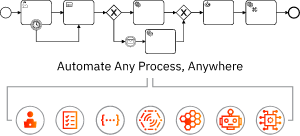
247. 3 Top Tools for Implementing Kubernetes Observability
 Here, in this blog, we’ve discussed three important tools to implement Kubernetes Observability. Let’s take a look!
Here, in this blog, we’ve discussed three important tools to implement Kubernetes Observability. Let’s take a look!
248. Monitoring & Orchestrating Your Microservices Landscape using Workflow Automation (Parts 6/7 of 7)
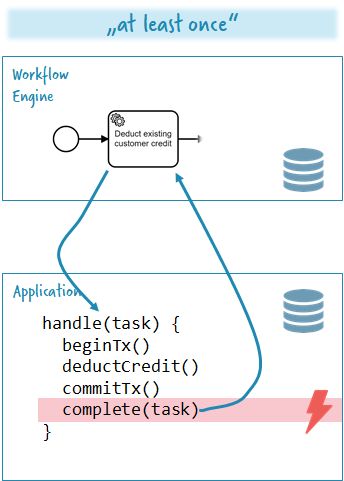 On Wednesday, March 11, 2020, I conducted the webinar titled “Monitoring & Orchestrating Your Microservices Landscape using Workflow Automation”. Not only was I overwhelmed by the number of attendees, but we also got a huge list of interesting questions before and especially during the webinar. Some of them were answered, but a lot of them were not. I want to answer all open questions in this series of seven blog posts. Today I am posting the final two in the series.
On Wednesday, March 11, 2020, I conducted the webinar titled “Monitoring & Orchestrating Your Microservices Landscape using Workflow Automation”. Not only was I overwhelmed by the number of attendees, but we also got a huge list of interesting questions before and especially during the webinar. Some of them were answered, but a lot of them were not. I want to answer all open questions in this series of seven blog posts. Today I am posting the final two in the series.
249. Kafka Gotchas
 I’ve assisted several large clients in building a microservices-style architecture using Kafka as a messaging backbone, having a reasonably good understanding of its abilities and the use cases that really bring them out. But I’m not a Kafka apologist by any stretch; any technology that has gone through such a rapid adoption curve is bound to polarise its audience and rub certain developers up a wrong way, and Kafka is no exception. Like anything else, you need to invest a significant amount of time in getting across Kafka and event streaming in general, before you become fully proficient and can harness its might. And be prepared to face one or two frustrations, to put it mildly, along the way.
I’ve assisted several large clients in building a microservices-style architecture using Kafka as a messaging backbone, having a reasonably good understanding of its abilities and the use cases that really bring them out. But I’m not a Kafka apologist by any stretch; any technology that has gone through such a rapid adoption curve is bound to polarise its audience and rub certain developers up a wrong way, and Kafka is no exception. Like anything else, you need to invest a significant amount of time in getting across Kafka and event streaming in general, before you become fully proficient and can harness its might. And be prepared to face one or two frustrations, to put it mildly, along the way.
250. Maintaining Quality When Transitioning from Monolith to Microservices
 Piece by piece, legacy monolith applications are being broken down and replaced by microservices.
Piece by piece, legacy monolith applications are being broken down and replaced by microservices.
251. Never Worry About Cloud-Native Tech Security Again
 If you have embraced the concept of cloud-native computing and principles, you are ahead; you are on the right path in today’s advanced and competitive IT environment. But we need to understand one thing that, moving your development environment and processes to a cloud-native environment can be daunting and challenging. Anybody can merely advise you to move from a monolithic application to a microservices architecture, but from where and how are the questions that need critical analysis.
If you have embraced the concept of cloud-native computing and principles, you are ahead; you are on the right path in today’s advanced and competitive IT environment. But we need to understand one thing that, moving your development environment and processes to a cloud-native environment can be daunting and challenging. Anybody can merely advise you to move from a monolithic application to a microservices architecture, but from where and how are the questions that need critical analysis.
252. Getting Started with Spring Cloud Stream
 This post was co-written with Ben Wilcock, Product and Technical Marketing Manager for Spring at Pivotal.
This post was co-written with Ben Wilcock, Product and Technical Marketing Manager for Spring at Pivotal.
253. Adding Serverless Authentication Microservice to a HTML, CSS and Javascript App
 Remembering passwords has become a headache these days.
Remembering passwords has become a headache these days.
254. Embrace the Chaos, Randomness and Uncertainty on Your Path to Engineer Better Software
 Chaos engineering is the practice of deliberately injecting an error into a system, in order to observe, in vivo, the consequences.
Chaos engineering is the practice of deliberately injecting an error into a system, in order to observe, in vivo, the consequences.
255. Best Front-End Settings To Create a PWA [QCObjects Edition]
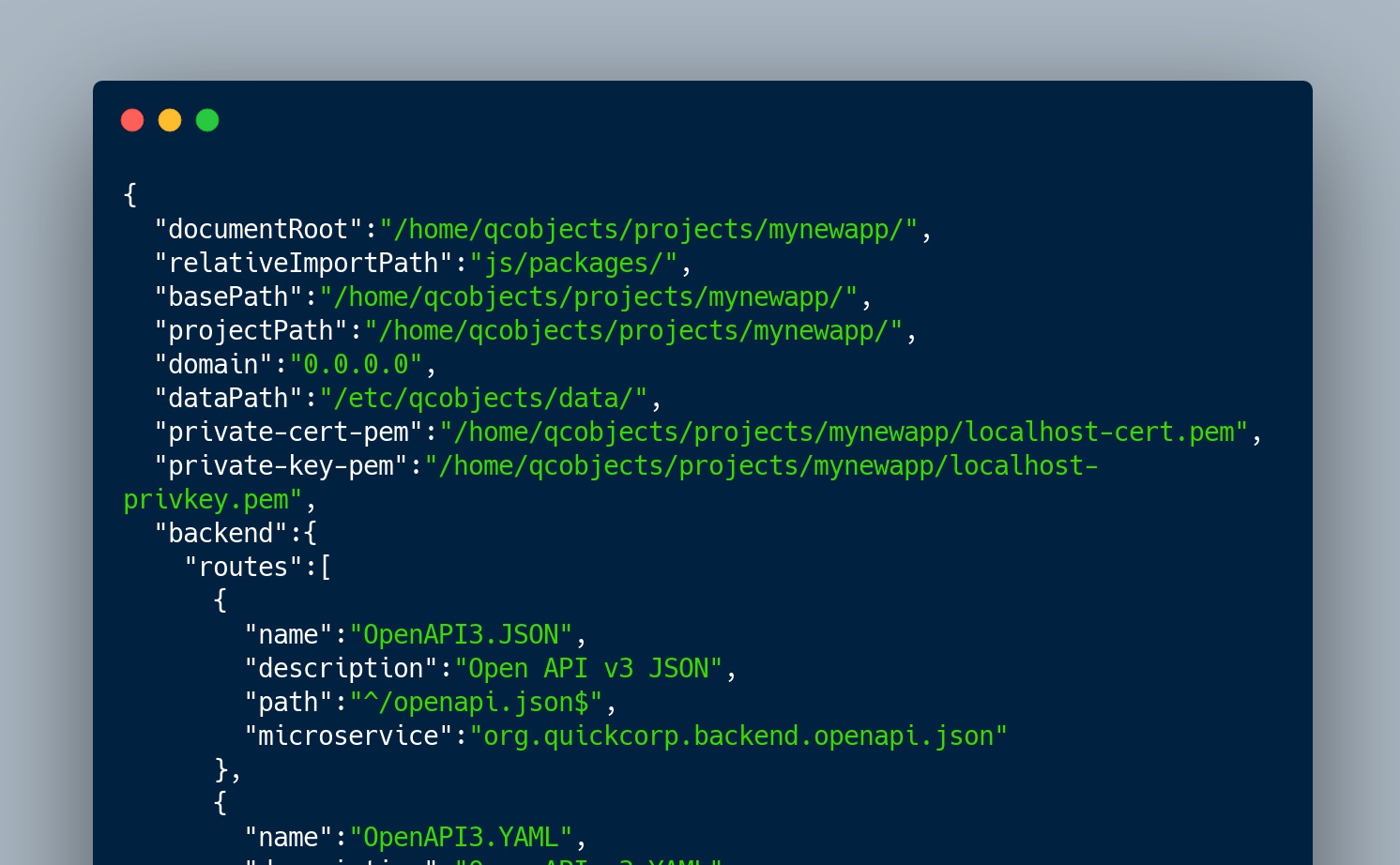 Here are some recommended settings for a good result doing your first steps creating a PWA using QCObjects:
Here are some recommended settings for a good result doing your first steps creating a PWA using QCObjects:
256. When Should You Move to Microservices?
 Avoiding the small monolith antipattern. At what scale do Microservices make sense? Avoid a solution worse than the problem and understand the tradeoffs.
Avoiding the small monolith antipattern. At what scale do Microservices make sense? Avoid a solution worse than the problem and understand the tradeoffs.
257. Containers 101: Kube Explained Part 2
 In our previous post, Kube Explained: Part 1, I described how the introduction of the cloud resulted in CI/CD, Microservices, and a massive amount of pressure to standardize backend infrastructure tooling.
In our previous post, Kube Explained: Part 1, I described how the introduction of the cloud resulted in CI/CD, Microservices, and a massive amount of pressure to standardize backend infrastructure tooling.
258. How To Create a Simple Application Using Golangspell
 For a couple of years I've been working with Golang, is such a great experience, Golang is a great language, in my opinion, simple, fast, and focused on high performance. But, not only it can help us to create a microservice that is fast, but we can also code quite quickly.
For a couple of years I've been working with Golang, is such a great experience, Golang is a great language, in my opinion, simple, fast, and focused on high performance. But, not only it can help us to create a microservice that is fast, but we can also code quite quickly.
259. What is the ideal memory size to lower costs of running a task on Lambda?
 Should you increase Lambda memory? It might sound crazy, but increasing your AWS Lambda memory could actually lower your bills. Find out how.
Should you increase Lambda memory? It might sound crazy, but increasing your AWS Lambda memory could actually lower your bills. Find out how.
260. "Do You Think You Know What it Takes to Tell The User It's Their Birthday?"

261. The Future of Integration-Platforms-as-a-Service (iPaaS)
 An analysis of the future direction of iPaaS, and the features and technologies that it is made up of. Introduces Choreo as a new generation iPaaS offering.
An analysis of the future direction of iPaaS, and the features and technologies that it is made up of. Introduces Choreo as a new generation iPaaS offering.
262. Building Microservice Architecture With ASP.NET Core
 In this article, we provide you with an introduction to designing and maintaining microservices-based applications using ASP.NET Core.
In this article, we provide you with an introduction to designing and maintaining microservices-based applications using ASP.NET Core.
263. 5 Ways that Microservices can be Deployed Effectively
 The perfect place to host a microservice application is largely determined by its size and scaling requirements. So, let’s go over the 5 main ways we can deploy
The perfect place to host a microservice application is largely determined by its size and scaling requirements. So, let’s go over the 5 main ways we can deploy
264. Steps Taken By Our Team To Build The eCars App Using Heroku And Salesforce
 As someone who became a Salesforce developer “by accident” 10 years ago and parlayed that into a career and business, I’m fully aware of the dividends that investing in continuous learning and brushing up on the latest in my industry can yield. Even after years of working in the Salesforce ecosystem, earning 11 certifications, and going through several hundred different projects, I’ve found it’s difficult to make the time to keep up with all the new tools and features of modern development (and usually I have the TrailheaDX and Dreamforce conferences each year to get caught up!).
As someone who became a Salesforce developer “by accident” 10 years ago and parlayed that into a career and business, I’m fully aware of the dividends that investing in continuous learning and brushing up on the latest in my industry can yield. Even after years of working in the Salesforce ecosystem, earning 11 certifications, and going through several hundred different projects, I’ve found it’s difficult to make the time to keep up with all the new tools and features of modern development (and usually I have the TrailheaDX and Dreamforce conferences each year to get caught up!).
265. Building The Koyeb Serverless Engine: Why We Moved From Kubernetes to Nomad, Firecracker, and Kuma
 We built our own serverless engine. Here is our story of moving user workloads from Kubernetes to a custom stack based on Nomad, Firecracker, and Kuma.
We built our own serverless engine. Here is our story of moving user workloads from Kubernetes to a custom stack based on Nomad, Firecracker, and Kuma.
266. An Intro to .Net Microservices Application Architecture
 .Net Microservices is gaining massive popularity in the Tech market. Let's find out what actually is dot Net Microservices Application Architecture?
.Net Microservices is gaining massive popularity in the Tech market. Let's find out what actually is dot Net Microservices Application Architecture?
267. Microservice Patterns to Design and Implement Any Java-Based Event-Driven Microservices Application
 Java spring boot developers tutorial- Tips to use partitioning strategies in your microservices application and use of various Deployment Patterns & Strategies.
Java spring boot developers tutorial- Tips to use partitioning strategies in your microservices application and use of various Deployment Patterns & Strategies.
268. You Absolutely Need To Read This To Master AWS Lambda [Part 1]
 Welcome to the Serverless world. One of the first things you’ll hear about is AWS Lambda - and you’ll continue to keep hearing about it! While architecture can be serverless without Lambdas involved, it’s very often the key component within a serverless application. In the first post of this 3-part AWS Lambda Handbook series, we run through what is AWS Lambda, dialling back to basics with the various terminology, how to create a Lambda function and how to run it.
Welcome to the Serverless world. One of the first things you’ll hear about is AWS Lambda - and you’ll continue to keep hearing about it! While architecture can be serverless without Lambdas involved, it’s very often the key component within a serverless application. In the first post of this 3-part AWS Lambda Handbook series, we run through what is AWS Lambda, dialling back to basics with the various terminology, how to create a Lambda function and how to run it.
269. The Ballerina Language and Platform Support for WebSockets
 WebSocket, used in full-duplex communication between web browsers and servers; let's take a look at how to implement this using Ballerina programming language.
WebSocket, used in full-duplex communication between web browsers and servers; let's take a look at how to implement this using Ballerina programming language.
270. Introduction to Containers, Microservices on Kubernetes
 Containers and Microservices have become the most popular way for new software deployments, and for application re-factoring, such as twelve factor apps.
Containers and Microservices have become the most popular way for new software deployments, and for application re-factoring, such as twelve factor apps.
271. Using KubeMQ Bridges to Communicate Between Edge and Cloud Clusters
 Struggling to communicate between your edge sources and the home cloud? Messaging could be the solution.
Struggling to communicate between your edge sources and the home cloud? Messaging could be the solution.
272. How to Optimize Large Scale Serverless Applications for Operational Excellence
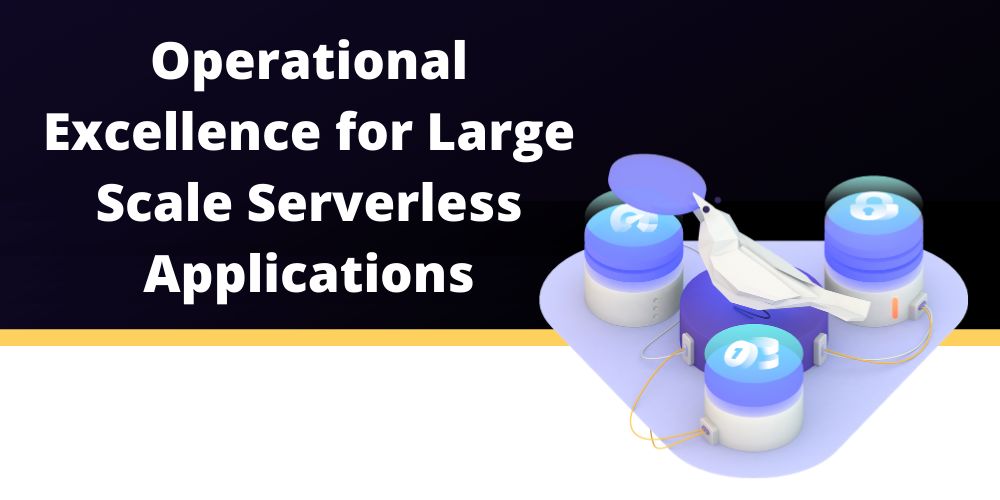 Managing applications at scale often comes up as one of the biggest concerns for businesses; How can it work smoothly? How do we monitor so many resources? How do we maintain best practices with constantly evolving infrastructure? In this article, we run through the best approach for operational excellence looking at serverless monitoring strategy, serverless alerting strategy, and security and compliance best practices.
Managing applications at scale often comes up as one of the biggest concerns for businesses; How can it work smoothly? How do we monitor so many resources? How do we maintain best practices with constantly evolving infrastructure? In this article, we run through the best approach for operational excellence looking at serverless monitoring strategy, serverless alerting strategy, and security and compliance best practices.
273. How To Dismantle Monolithic Apps
 Monolith breakup strategies technical and project management
Monolith breakup strategies technical and project management
274. Things to Keep in Mind to Successfully Deploy Kubernetes in Production
 This blog covers additional factors you should take care of to successfully deploy Kubernetes cluster in production alongwith choosing a managed cloud. Read on.
This blog covers additional factors you should take care of to successfully deploy Kubernetes cluster in production alongwith choosing a managed cloud. Read on.
275. Observability for Monitoring Microservices - Top 5 Ways!
 Here are some important tools and approaches to managing and monitoring Microservices. Take a look!
Here are some important tools and approaches to managing and monitoring Microservices. Take a look!
276. An In-Depth Look at Shopify Plus: The Last E-Commerce Monolith
 Platforms like Shopify Plus offer headless capabilities, but the real magic is in modular commerce technology.
Platforms like Shopify Plus offer headless capabilities, but the real magic is in modular commerce technology.
277. 5 Things Every Apache Kafka Dev Needs To Know: A Performance and Architectural Deep Dive
 Here are five tips on how Kafka works and how you can get started with Apache Kafka.
Here are five tips on how Kafka works and how you can get started with Apache Kafka.
Thank you for checking out the 277 most read stories about Microservices on HackerNoon.
Visit the /Learn Repo to find the most read stories about any technology.


